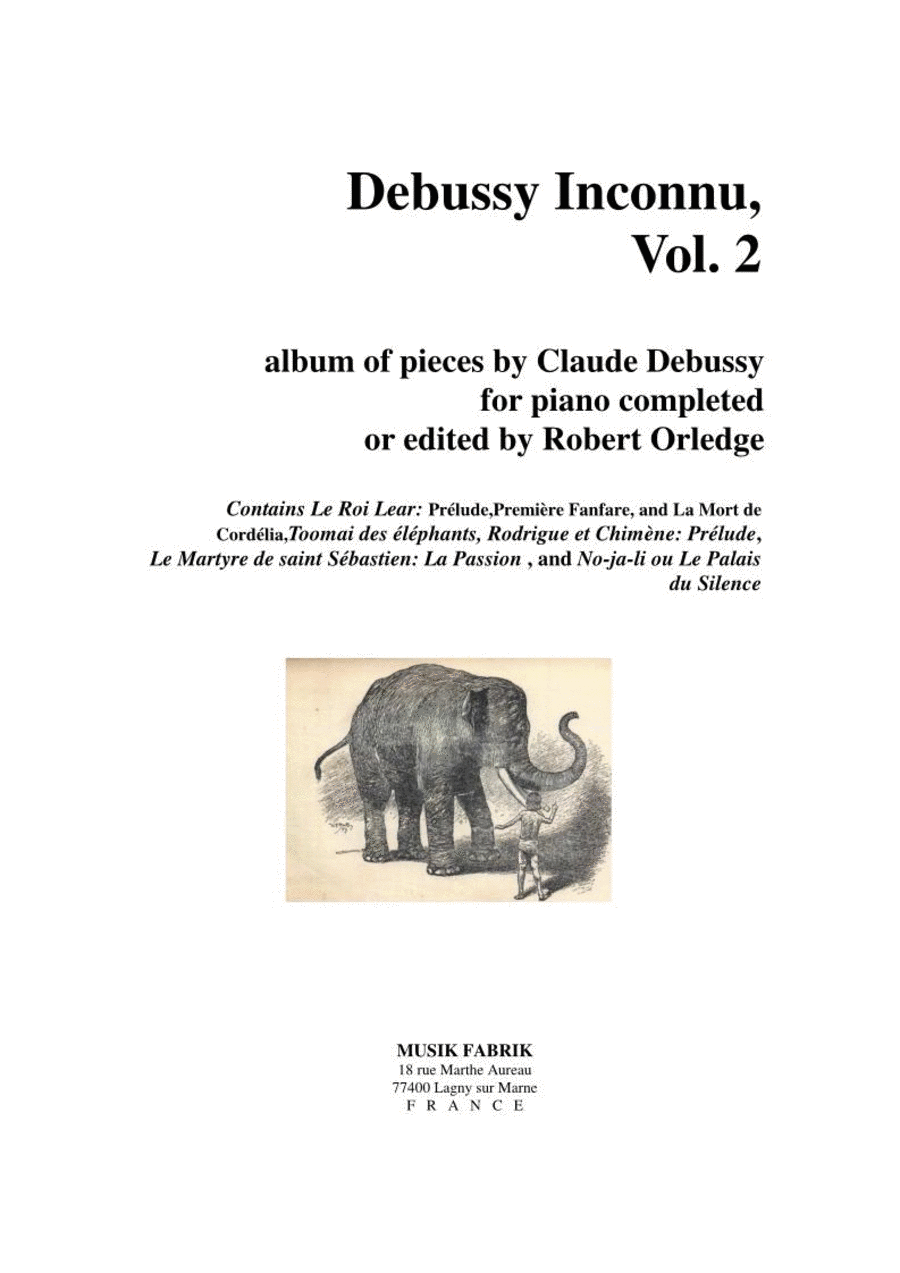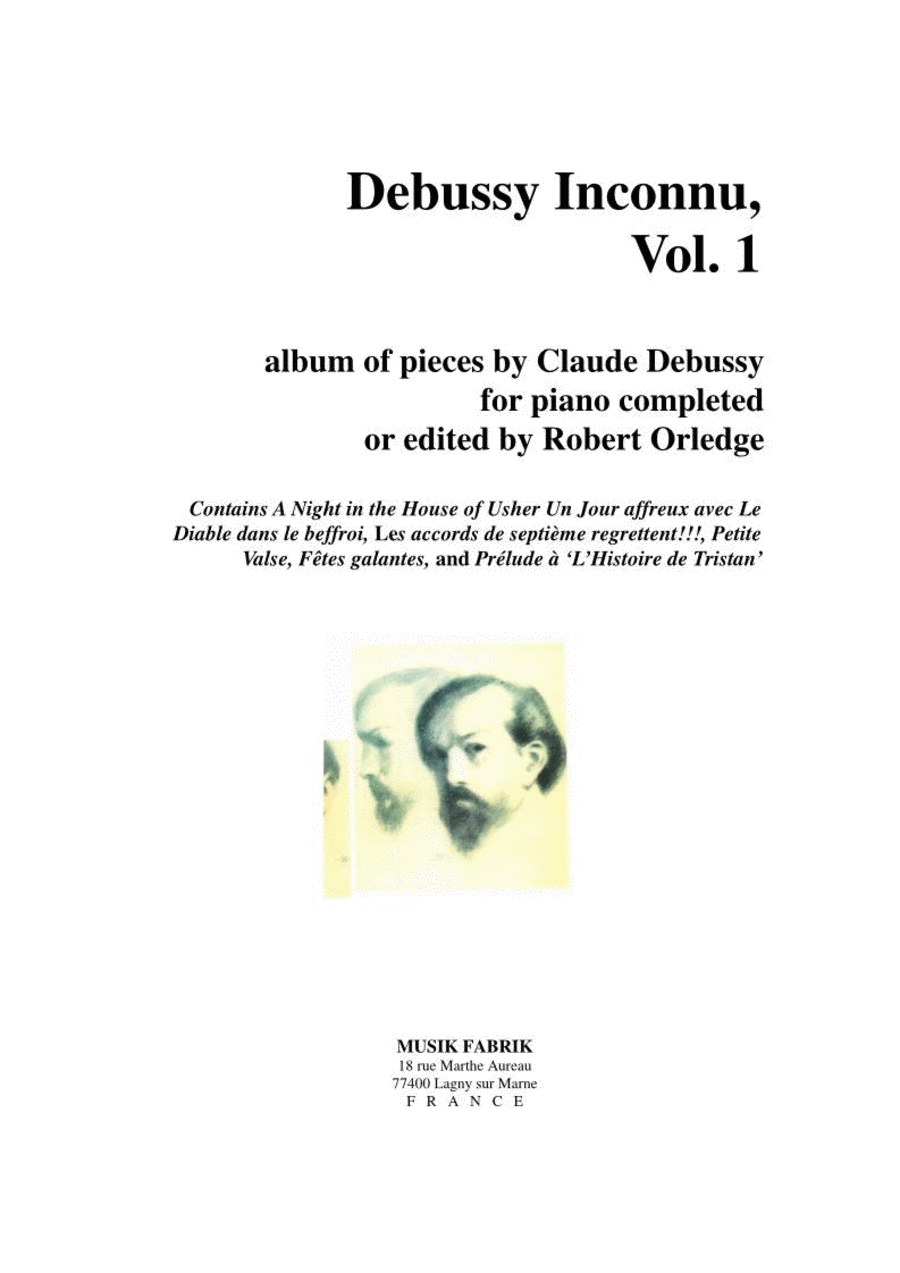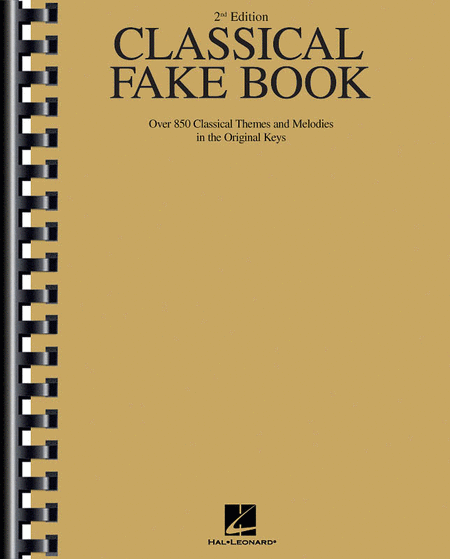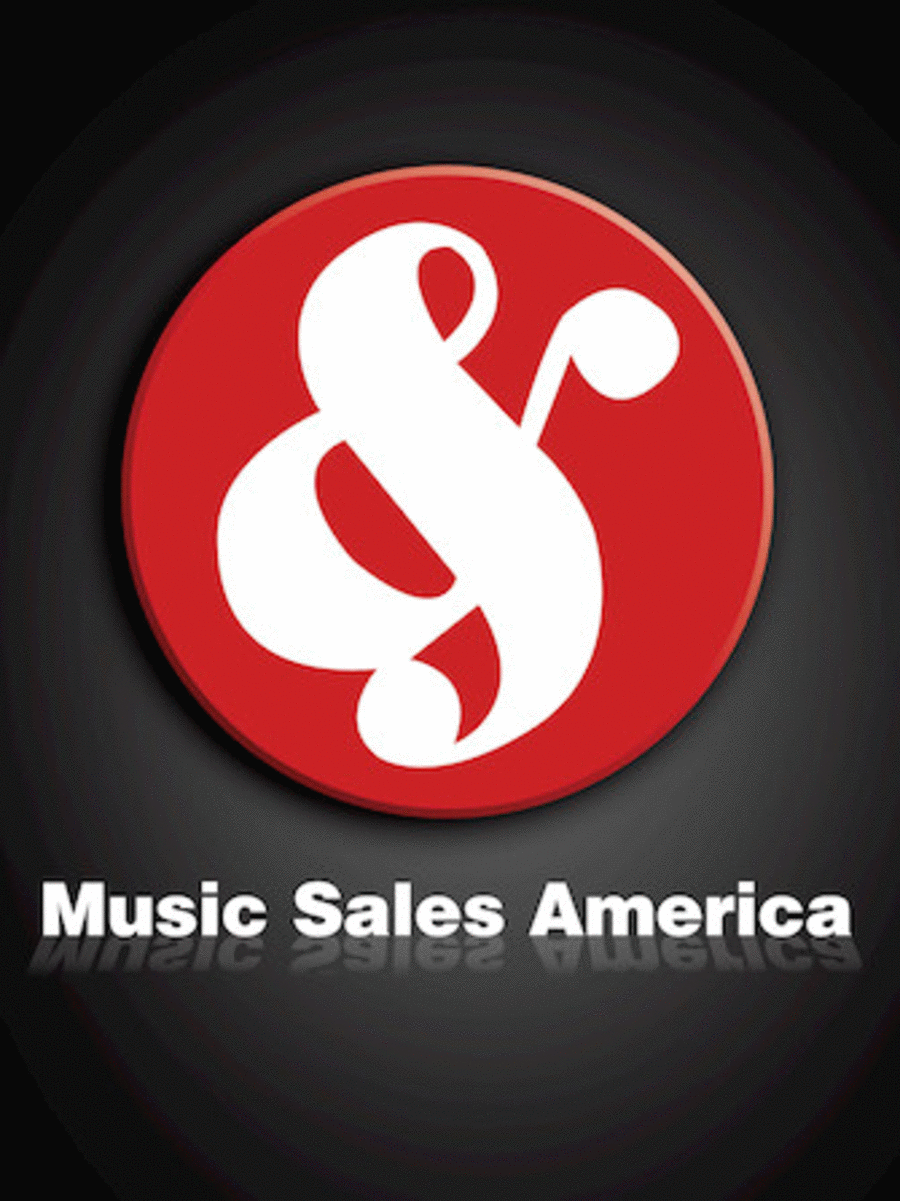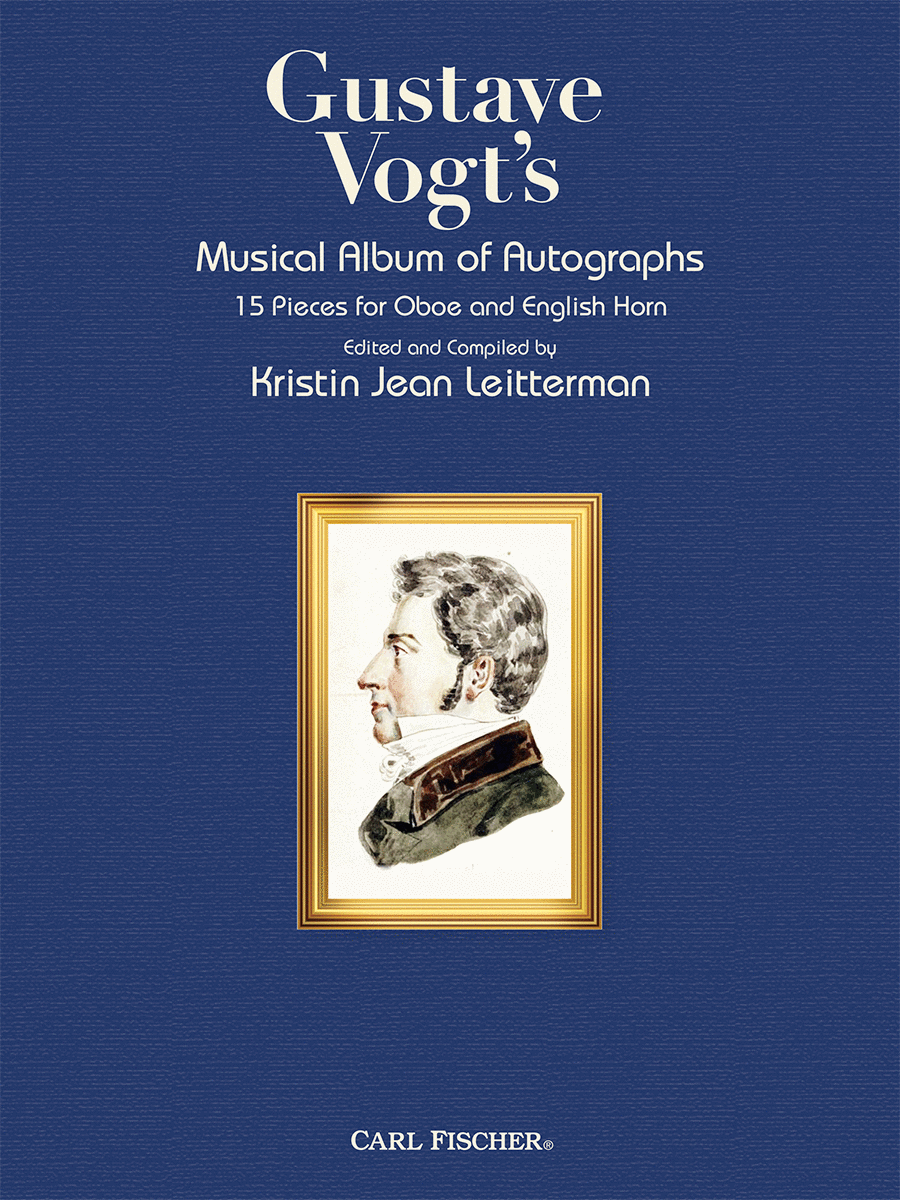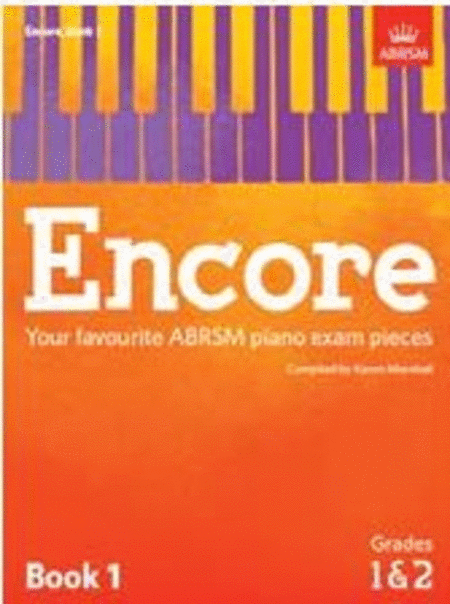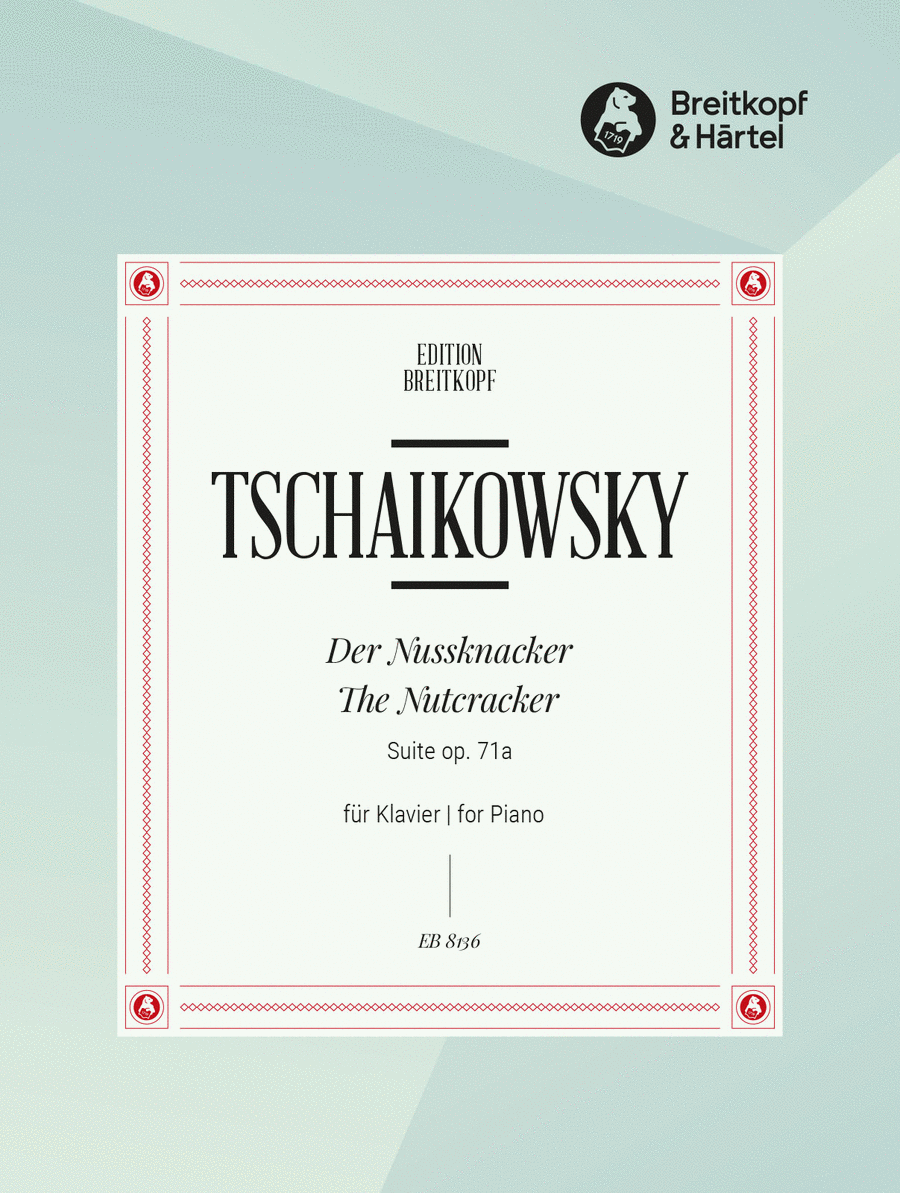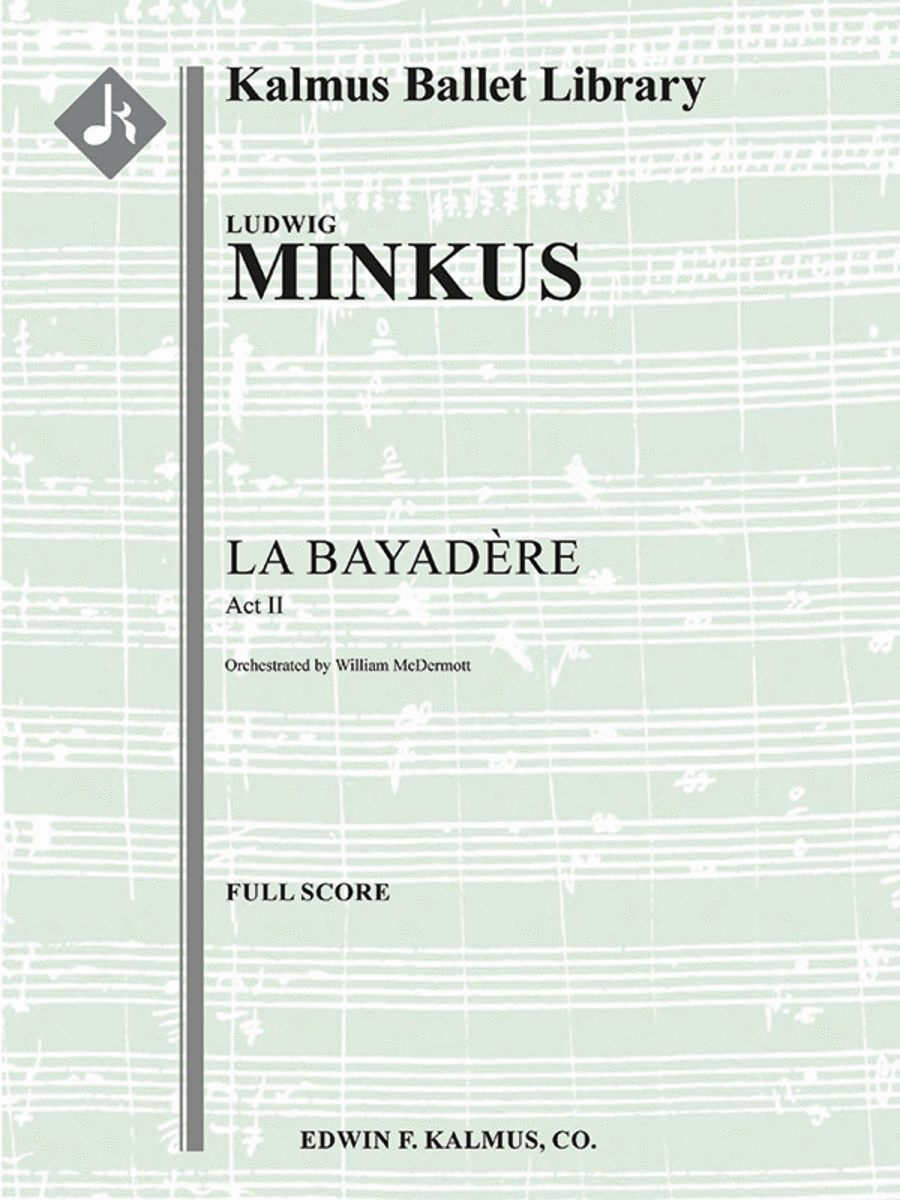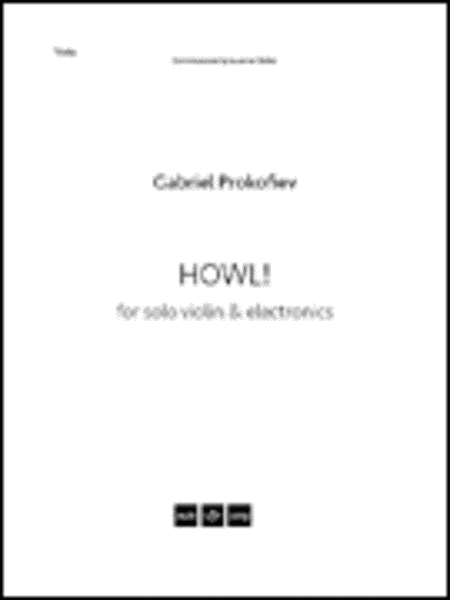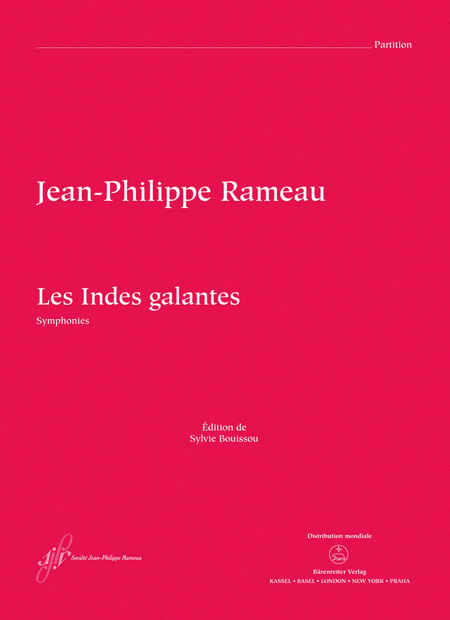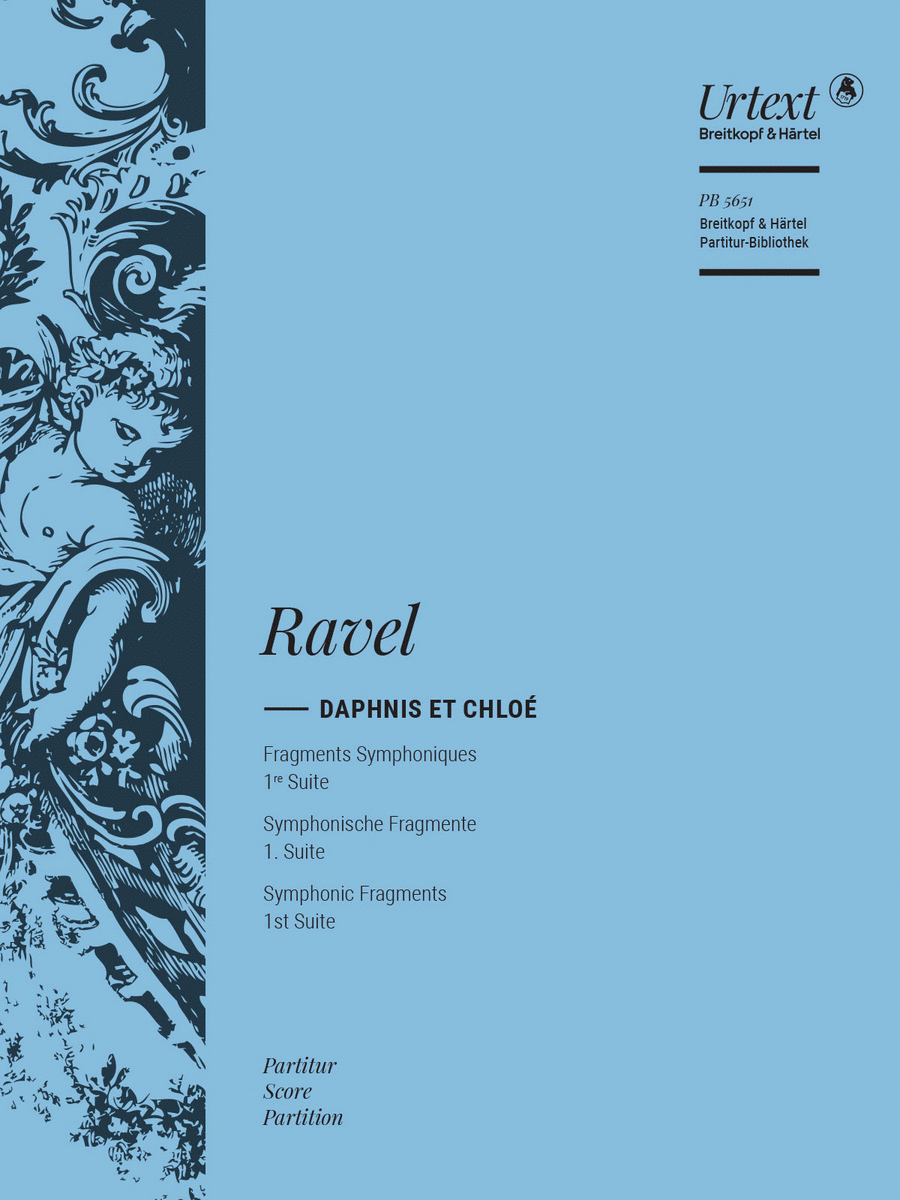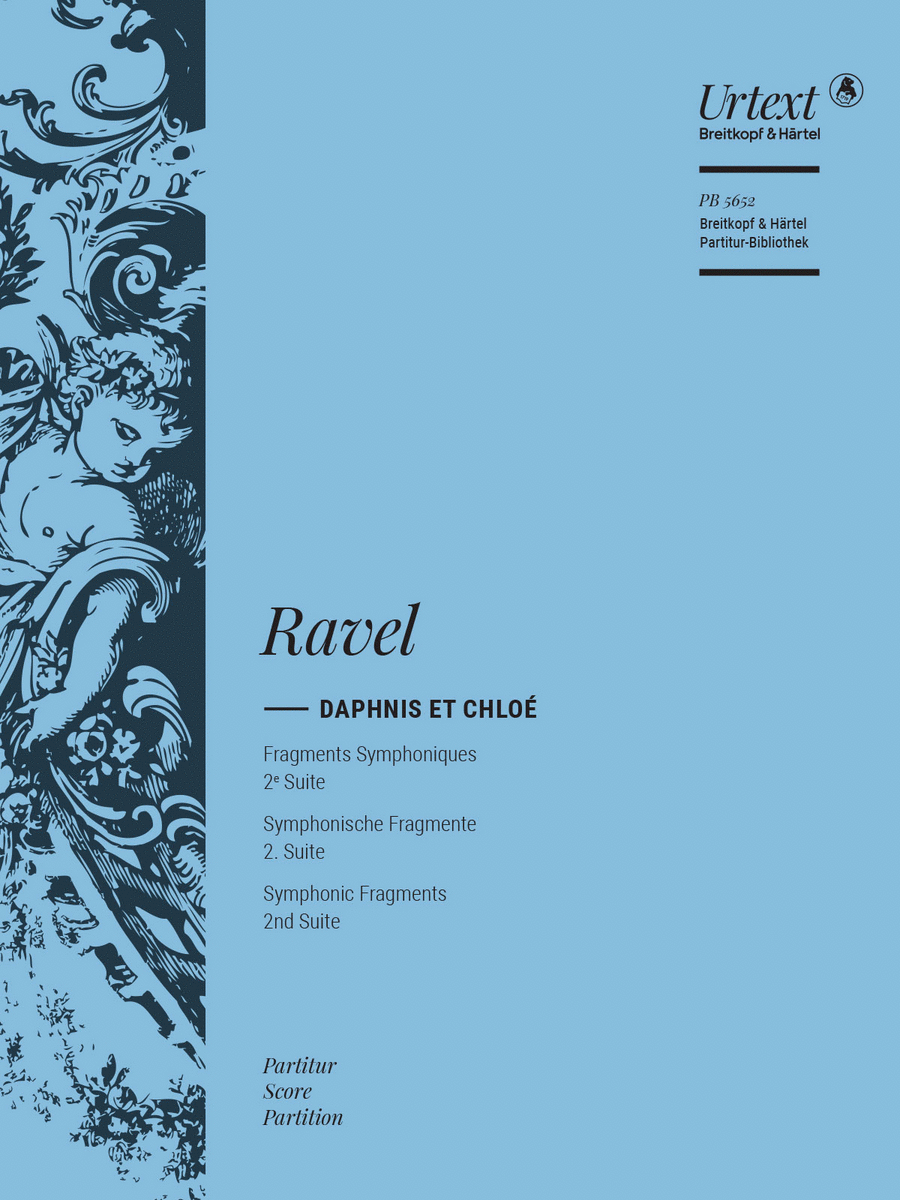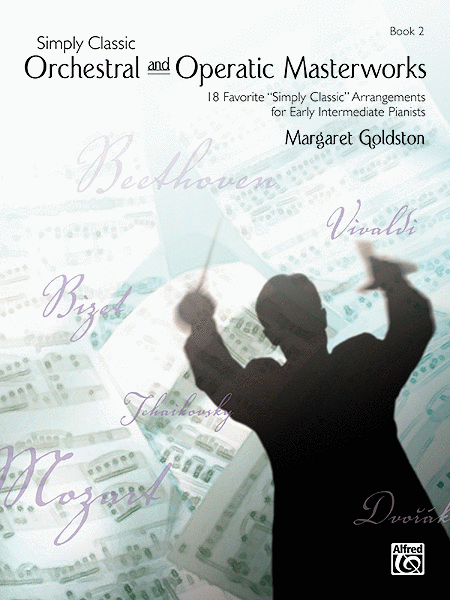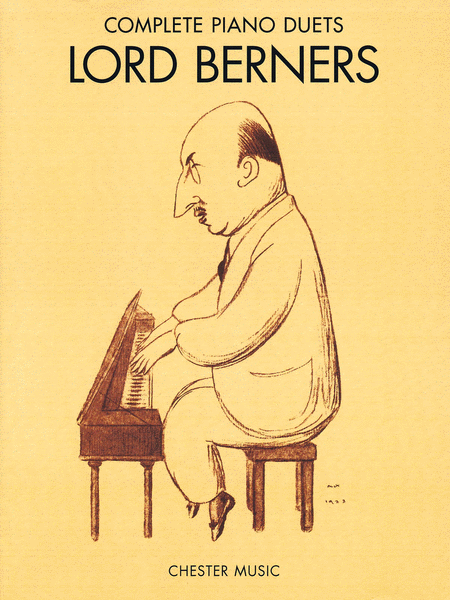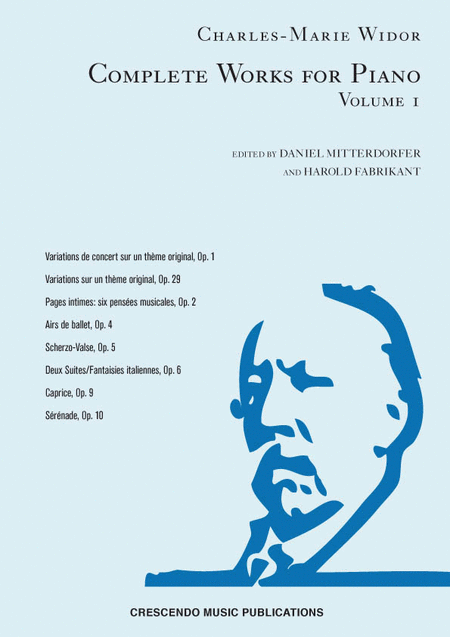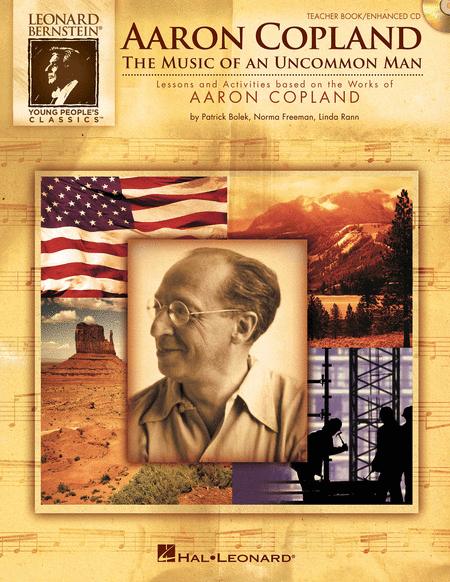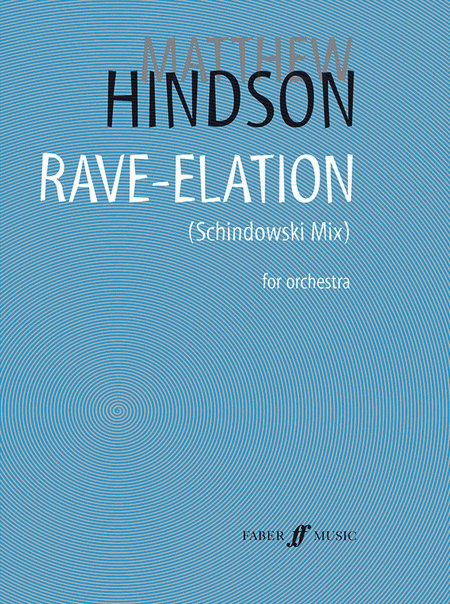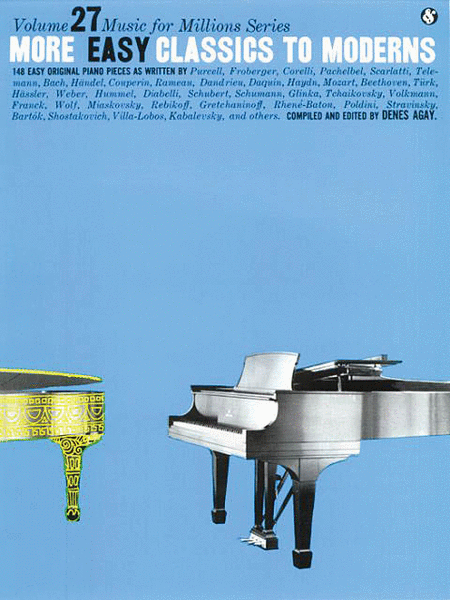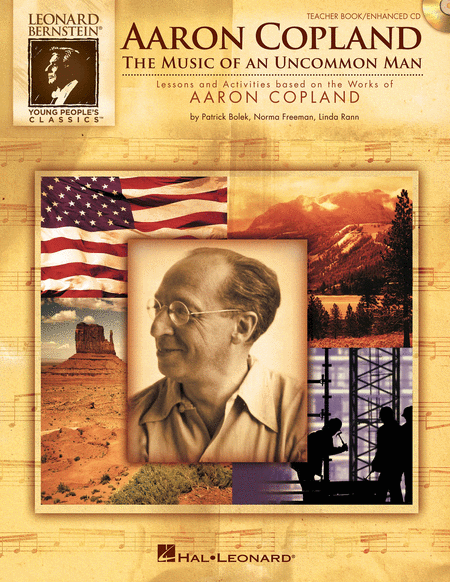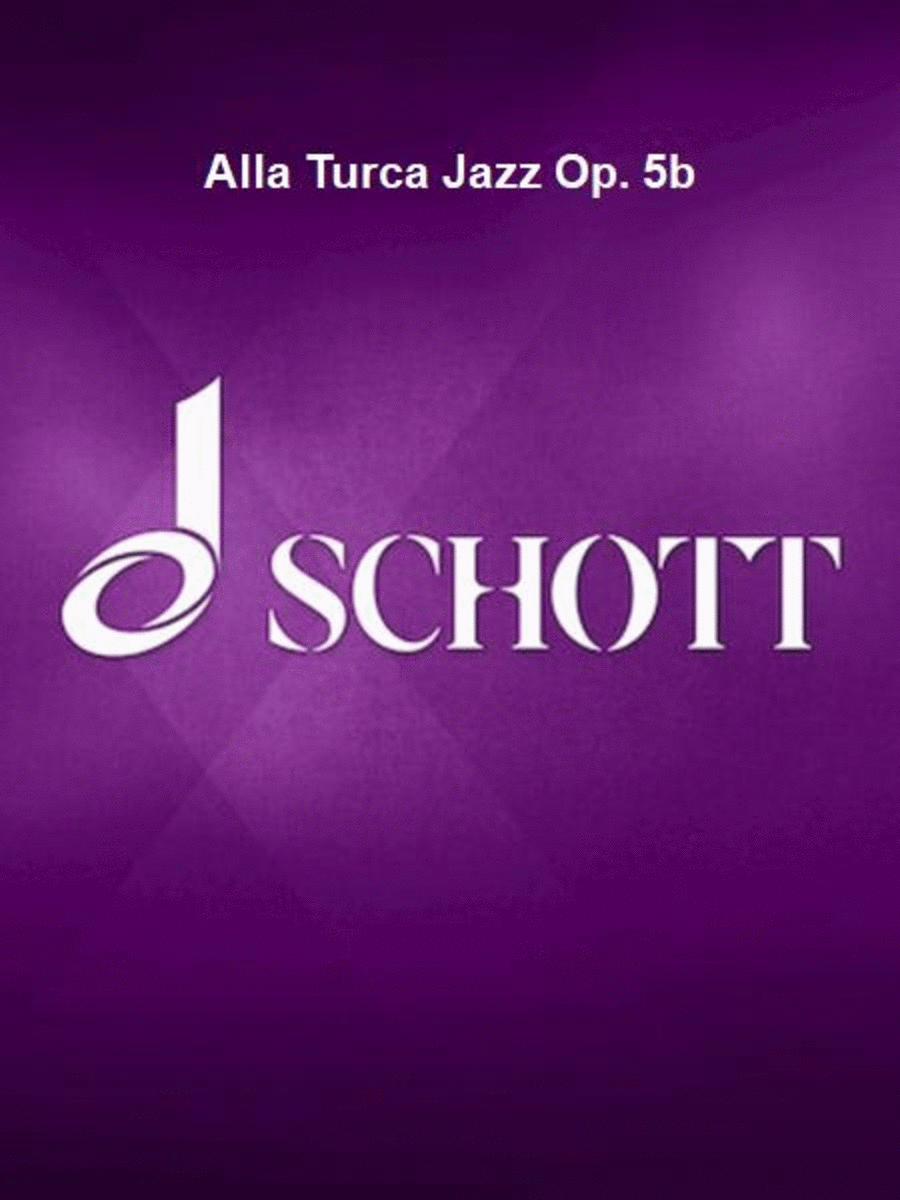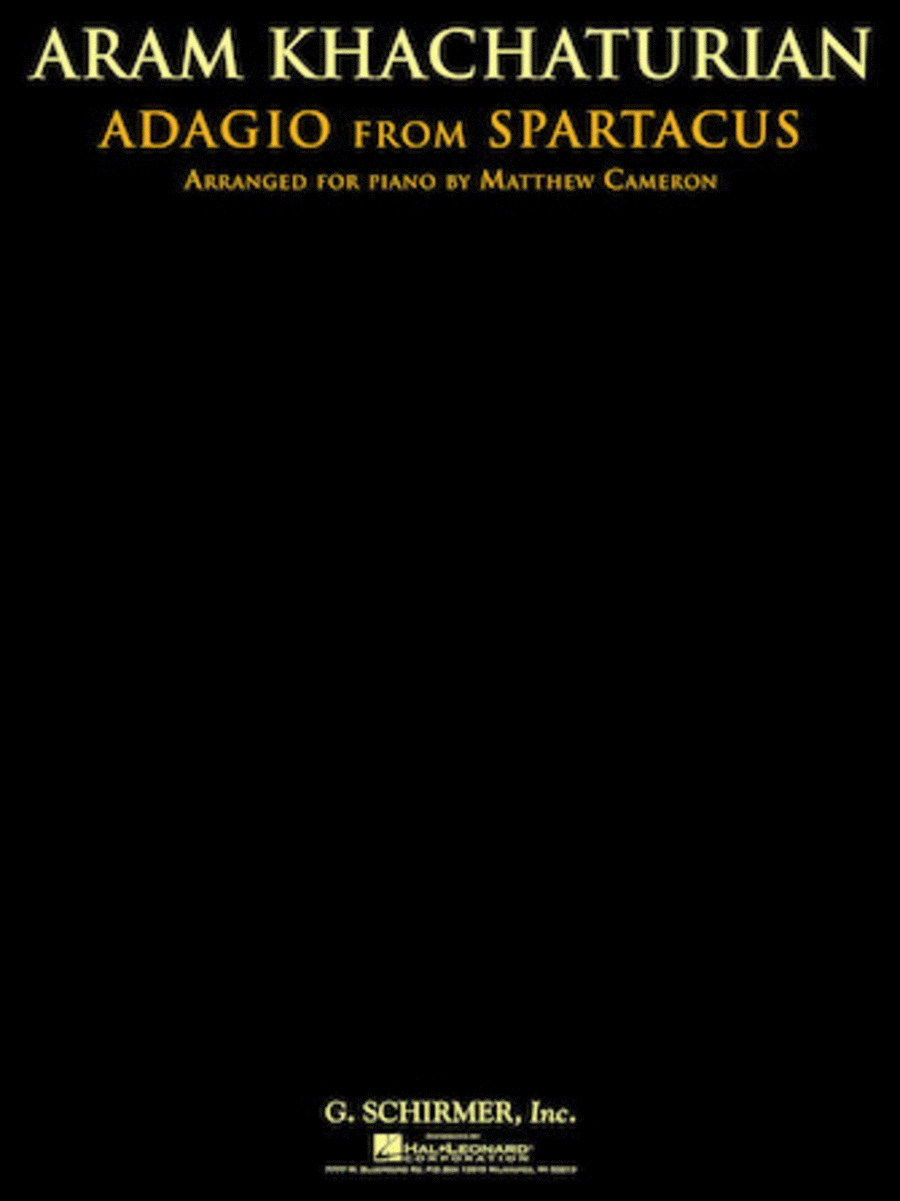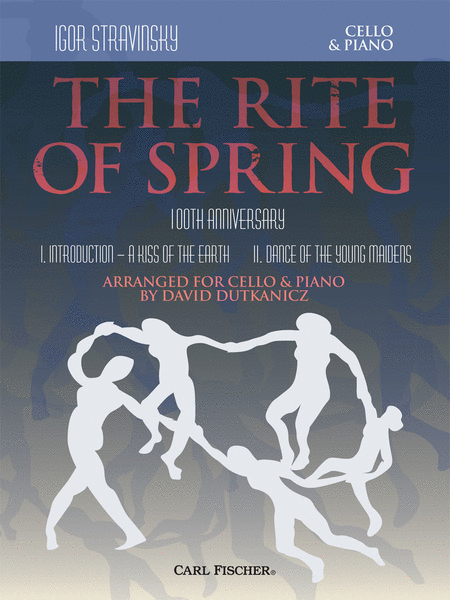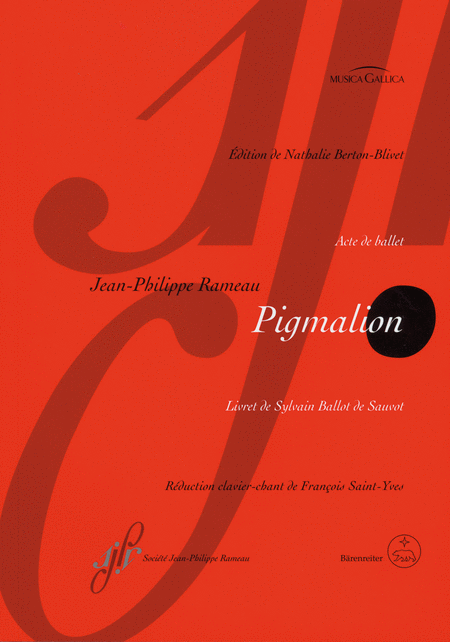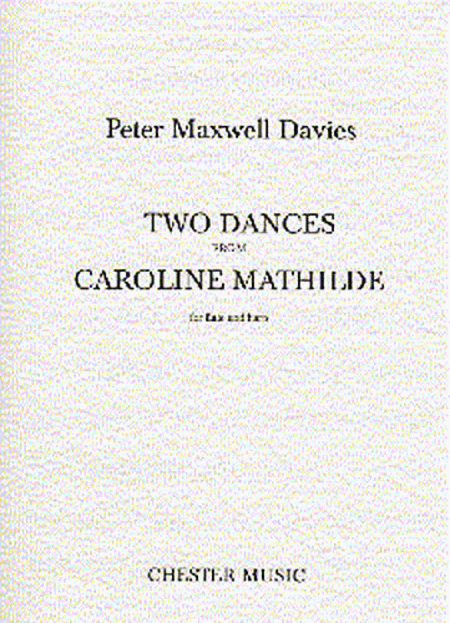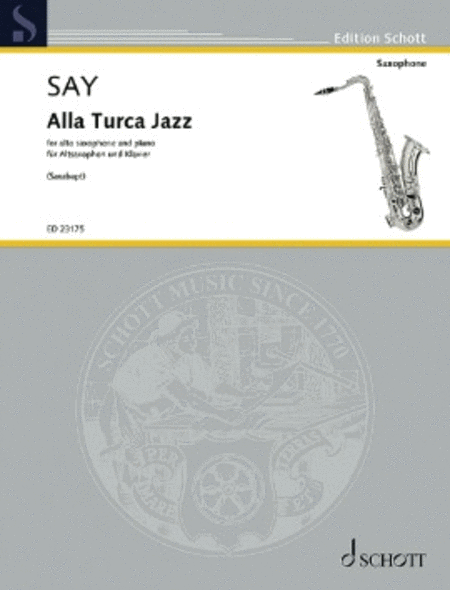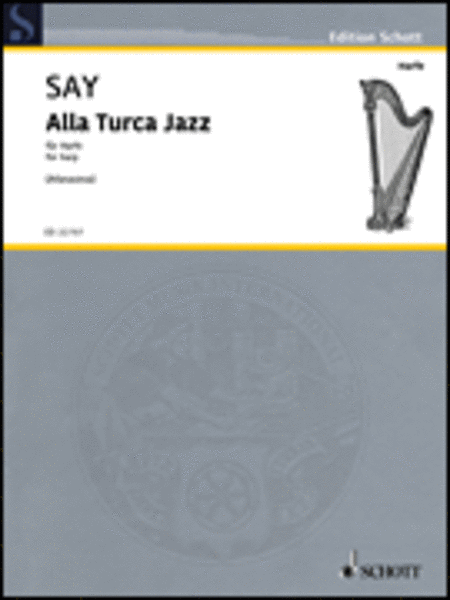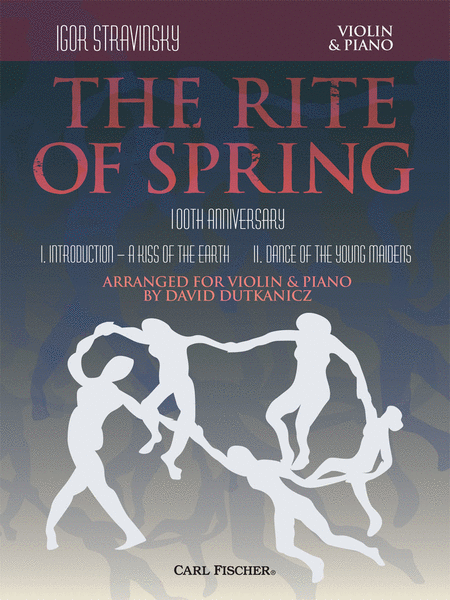|
| Debussy Inconnu: Album of works for the piano by Claude Debussy completed by Robert Orledge, Vol. 2
Piano seul [Conducteur] - Intermédiaire
Musik Fabrik
Piano - Grade 5 SKU: FA.MFCD017B By Nicolas Horvath. By Claude Debussy an...(+)
Piano - Grade 5 SKU:
FA.MFCD017B By
Nicolas Horvath. By
Claude Debussy and Robert
Orledge. Rediscoverd
Debussy. Christmas.
Score. Musik Fabrik
#MFCD017B. Published by
Musik Fabrik
(FA.MFCD017B). 8.27 x
11.69
inches. Contains Le
Roi Lear:
Prelude,Premiere Fanfare,
and La Mort de
Cordelia,Toomai des
elephants, Rodrigue et
Chimene: Prelude a l'acte
1p. Le Martyre de Saint
Sebastien: La Passion ,
and No-ja-li ou Le Palais
du Silence
From
Robert Orledge's
notes:
My interest
in the wonderful music of
Claude Debussy began in
the 1980s when I
researched and published
a book with Cambridge
University Press entitled
Debussy and the Theatre.
During the course of my
studies in Paris, I was
amazed to discover that
Debussy planned over 50
theatrical works but only
finished two of these
entirely by himself (the
opera Pelleas et
Melisande in 1893-1902
and the ballet Jeux for
Diaghilev's Ballets
Russes in 1912-13). Of
the rest, many were never
started musically (like
Siddartha and Orphee-roi
with the Oriental scholar
Victor Segalen, 1907);
some had a few
tantalising sketches
(like the Edgar Allan Poe
opera Le Diable dans le
beffroi, 1902-03); some
were half-finished (like
his other Poe opera La
Chute de la Maison Usher,
1908-17); while others
were musically complete
but had their
orchestrations completed
by other composers (like
Khamma, by Charles
Koechlin, 1912-13; or Le
Martyre de Saint
Sebastien and La Boite a
joujoux by his 'angel of
corrections' ['l'ange des
Corrections'] Andre
Caplet in 1911 and 1919
respectively).
For
it has to be admitted
that what some scholars
call Debussy's
'compulsive achievement'
could equally well be
viewed as laziness,
especially as far as the
minute detail required
for calligraphing his
orchestral scores was
concerned. It was as if
creating the music itself
was of greater importance
than controlling its
final sound, even if
Debussy was an
imaginative orchestrator
when he found the time
and energy to do it. It
also seems true that
Debussy also preferred
inventing ideas to
turning them into
complete pieces. However,
despite the lack of
detail in many of his
sketches (missing clefs,
key signatures, dynamics,
phrasing, etc.) the notes
themselves are
surprisingly accurate,
whether or not they can
be compared with a later
draft. Thus, a large
number of sketches exist
for his Chinese ballet
No-ja-li ou Le Palais du
Silence and it is not too
difficult to see which
parts of Georges de
Feure's 1913 scenario
(see below) inspired
which ideas. But Debussy
hardly made any attempt
to join them together
after the first few
bars.
It was
usually up to his
publisher, Jacques
Durand, to find solutions
when Debussy risked a
breach of contract.
Debussy was supposed to
supervise the
orchestrations completed
by others, but this
supervision was usually
very light and restricted
to quiet, sensitive
moments in which problems
were easier to spot. Far
from jealously guarding
every one of his created
notes, as Ravel did,
Debussy once even went as
far as to ask Koechlin to
'write a ballet for him
that he would sign' on 26
March 1914 when he was
hard-pressed to fulfil
his lucrative contract
for No-ja-li with Andre
Charlot at the Alhambra
Theatre in London. In the
end, Debussy (through
Durand) sent Charlot the
symphonic suite Printemps
instead, whose
orchestration had been
completed by Henri Busser
in the Spring of
1912.
So, when I
was offered early
retirement as Professor
of Music at Liverpool
University in 2004, I
seized the opportunity it
would give me to spend
time trying to
reconstruct some of
Debussy's lost potential
masterpieces from his
existing sketches and
drafts--then
orchestrating them in
Debussy's style when this
was appropriate. I had
begun this mission in
2001 with the most
promising project, the
missing parts of Scene 2
of La Chute de la Maison
Usher and the sheer joy
it gave me at every stage
persuaded me to tackle
other projects,
especially when Debussy
experts were unable to
identify exactly where I
took over from Debussy
(and vice versa) in
Usher. $48.69 - Voir plus => AcheterDélais: 4 to 6 weeks | | | |
| Debussy Inconnu: Album of works for the piano by Claude Debussy completed by Robert Orledge, Vol. 1
Piano seul [Conducteur]
Musik Fabrik
By Nicolas Horvath. By Robert Orledge and Claude Debussy (1862-1918). Redi...(+)
By Nicolas Horvath. By
Robert Orledge and Claude
Debussy (1862-1918).
Rediscoverd Debussy.
Christmas. Score. Musik
Fabrik #MFCD017A.
Published
by Musik Fabrik
$48.69 - Voir plus => AcheterDélais: 4 to 6 weeks | | | |
| Classical Fake Book - 2nd Edition
Fake Book [Fake Book] - Facile
Hal Leonard
(Over 850 Classical Themes and Melodies in the Original Keys) For C instrument. ...(+)
(Over 850 Classical
Themes and Melodies in
the Original Keys) For C
instrument. Format:
fakebook (spiral bound).
With vocal melody
(excerpts) and chord
names. Lassical. Series:
Hal Leonard Fake Books.
646 pages. 9x12 inches.
Published by Hal Leonard.
(8)$49.99 - Voir plus => AcheterDélais: 24 hours - In Stock | | | |
| John McCabe: Two Scenes From Edward II
Music Sales
Two pieces from the score of the full-length ballet Edward II. The ballet iteslf...(+)
Two pieces from the score
of the full-length ballet
Edward II. The ballet
iteslf was commissioned
by the Stuttgart Ballet,
and completed in 1995.
The first performance
took place in Stuttgart
in April 1995, and in the
same year this
arrangement for 2 Pianos
of two scenes was
commissioned by the Port
Fairy Festival of
Australia. The first
pieces represents one of
the lighter moments of
the ballet, and is based
upon a set of dances at
the French Court The
second piece is a
reminder of the darker
nature of the ballet as a
whole, expressing the
lust for power as the
Barons opposed to Edward
II unite in anger at his
behaviour
$47.00 - Voir plus => AcheterDélais: 2 to 3 weeks | | | |
| Gustave Vogt's Musical Album of Autographs
Cor anglais, Piano
Carl Fischer
Chamber Music English Horn, Oboe SKU: CF.WF229 15 Pieces for Oboe and ...(+)
Chamber Music English
Horn, Oboe SKU:
CF.WF229 15 Pieces
for Oboe and English
Horn. Composed by
Gustave Vogt. Edited by
Kristin Jean Leitterman.
Collection - Performance.
32+8 pages. Carl Fischer
Music #WF229. Published
by Carl Fischer Music
(CF.WF229). ISBN
9781491153789. UPC:
680160911288. Intro
duction Gustave Vogt's
Musical Paris Gustave
Vogt (1781-1870) was born
into the Age of
Enlightenment, at the
apex of the
Enlightenment's outreach.
During his lifetime he
would observe its effect
on the world. Over the
course of his life he
lived through many
changes in musical style.
When he was born,
composers such as Mozart
and Haydn were still
writing masterworks
revered today, and
eighty-nine years later,
as he departed the world,
the new realm of
Romanticism was beginning
to emerge with Mahler,
Richard Strauss and
Debussy, who were soon to
make their respective
marks on the musical
world. Vogt himself left
a huge mark on the
musical world, with
critics referring to him
as the grandfather of the
modern oboe and the
premier oboist of Europe.
Through his eighty-nine
years, Vogt would live
through what was perhaps
the most turbulent period
of French history. He
witnessed the French
Revolution of 1789,
followed by the many
newly established
governments, only to die
just months before the
establishment of the
Third Republic in 1870,
which would be the
longest lasting
government since the
beginning of the
revolution. He also
witnessed the
transformation of the
French musical world from
one in which opera
reigned supreme, to one
in which virtuosi,
chamber music, and
symphonic music ruled.
Additionally, he
experienced the
development of the oboe
right before his eyes.
When he began playing in
the late eighteenth
century, the standard
oboe had two keys (E and
Eb) and at the time of
his death in 1870, the
System Six Triebert oboe
(the instrument adopted
by Conservatoire
professor, Georges
Gillet, in 1882) was only
five years from being
developed. Vogt was born
March 18, 1781 in the
ancient town of
Strasbourg, part of the
Alsace region along the
German border. At the
time of his birth,
Strasbourg had been
annexed by Louis XIV, and
while heavily influenced
by Germanic culture, had
been loosely governed by
the French for a hundred
years. Although it is
unclear when Vogt began
studying the oboe and
when his family made its
move to the French
capital, the Vogts may
have fled Strasbourg in
1792 after much of the
city was destroyed during
the French Revolution. He
was without question
living in Paris by 1798,
as he enrolled on June 8
at the newly established
Conservatoire national de
Musique to study oboe
with the school's first
oboe professor,
Alexandre-Antoine
Sallantin (1775-1830).
Vogt's relationship with
the Conservatoire would
span over half a century,
moving seamlessly from
the role of student to
professor. In 1799, just
a year after enrolling,
he was awarded the
premier prix, becoming
the fourth oboist to
achieve this award. By
1802 he had been
appointed repetiteur,
which involved teaching
the younger students and
filling in for Sallantin
in exchange for a free
education. He maintained
this rank until 1809,
when he was promoted to
professor adjoint and
finally to professor
titulaire in 1816 when
Sallantin retired. This
was a position he held
for thirty-seven years,
retiring in 1853, making
him the longest serving
oboe professor in the
school's history. During
his tenure, he became the
most influential oboist
in France, teaching
eighty-nine students,
plus sixteen he taught
while he was professor
adjoint and professor
titulaire. Many of these
students went on to be
famous in their own
right, such as Henri Brod
(1799-1839), Apollon
Marie-Rose Barret
(1804-1879), Charles
Triebert (1810-1867),
Stanislas Verroust
(1814-1863), and Charles
Colin (1832-1881). His
influence stretches from
French to American oboe
playing in a direct line
from Charles Colin to
Georges Gillet
(1854-1920), and then to
Marcel Tabuteau
(1887-1966), the oboist
Americans lovingly
describe as the father of
American oboe playing.
Opera was an important
part of Vogt's life. His
first performing position
was with the
Theatre-Montansier while
he was still studying at
the Conservatoire.
Shortly after, he moved
to the Ambigu-Comique
and, in 1801 was
appointed as first oboist
with the Theatre-Italien
in Paris. He had been in
this position for only a
year, when he began
playing first oboe at the
Opera-Comique. He
remained there until
1814, when he succeeded
his teacher,
Alexandre-Antoine
Sallantin, as soloist
with the Paris Opera, the
top orchestra in Paris at
the time. He played with
the Paris Opera until
1834, all the while
bringing in his current
and past students to fill
out the section. In this
position, he began to
make a name for himself;
so much so that specific
performances were
immortalized in memoirs
and letters. One comes
from a young Hector
Berlioz (1803-1865) after
having just arrived in
Paris in 1822 and
attended the Paris
Opera's performance of
Mehul's Stratonice and
Persuis' ballet Nina. It
was in response to the
song Quand le bien-amie
reviendra that Berlioz
wrote: I find it
difficult to believe that
that song as sung by her
could ever have made as
true and touching an
effect as the combination
of Vogt's instrument...
Shortly after this,
Berlioz gave up studying
medicine and focused on
music. Vogt frequently
made solo and chamber
appearances throughout
Europe. His busiest
period of solo work was
during the 1820s. In 1825
and 1828 he went to
London to perform as a
soloist with the London
Philharmonic Society.
Vogt also traveled to
Northern France in 1826
for concerts, and then in
1830 traveled to Munich
and Stuttgart, visiting
his hometown of
Strasbourg on the way.
While on tour, Vogt
performed Luigi
Cherubini's (1760-1842)
Ave Maria, with soprano
Anna (Nanette) Schechner
(1806-1860), and a
Concertino, presumably
written by himself. As a
virtuoso performer in
pursuit of repertoire to
play, Vogt found himself
writing much of his own
music. His catalog
includes chamber music,
variation sets, vocal
music, concerted works,
religious music, wind
band arrangements, and
pedagogical material. He
most frequently performed
his variation sets, which
were largely based on
themes from popular
operas he had, presumably
played while he was at
the Opera. He made his
final tour in 1839,
traveling to Tours and
Bordeaux. During this
tour he appeared with the
singer Caroline Naldi,
Countess de Sparre, and
the violinist Joseph
Artot (1815-1845). This
ended his active career
as a soloist. His
performance was described
in the Revue et gazette
musicale de Paris as
having lost none of his
superiority over the
oboe.... It's always the
same grace, the same
sweetness. We made a trip
to Switzerland, just by
closing your eyes and
listening to Vogt's oboe.
Vogt was also active
performing in Paris as a
chamber and orchestral
musician. He was one of
the founding members of
the Societe des Concerts
du Conservatoire, a group
established in 1828 by
violinist and conductor
Francois-Antoine Habeneck
(1781-1849). The group
featured faculty and
students performing
alongside each other and
works such as Beethoven
symphonies, which had
never been heard in
France. He also premiered
the groundbreaking
woodwind quintets of
Antonin Reicha
(1770-1836). After his
retirement from the Opera
in 1834 and from the
Societe des Concerts du
Conservatoire in 1842,
Vogt began to slow down.
His final known
performance was of
Cherubini's Ave Maria on
English horn with tenor
Alexis Dupont (1796-1874)
in 1843. He then began to
reflect on his life and
the people he had known.
When he reached his 60s,
he began gathering
entries for his Musical
Album of Autographs.
Autograph Albums Vogt's
Musical Album of
Autographs is part of a
larger practice of
keeping autograph albums,
also commonly known as
Stammbuch or Album
Amicorum (meaning book of
friendship or friendship
book), which date back to
the time of the
Reformation and the
University of Wittenberg.
It was during the
mid-sixteenth century
that students at the
University of Wittenberg
began passing around
bibles for their fellow
students and professors
to sign, leaving messages
to remember them by as
they moved on to the next
part of their lives. The
things people wrote were
mottos, quotes, and even
drawings of their family
coat of arms or some
other scene that meant
something to the owner.
These albums became the
way these young students
remembered their school
family once they had
moved on to another
school or town. It was
also common for the
entrants to comment on
other entries and for the
owner to amend entries
when they learned of
important life details
such as marriage or
death. As the practice
continued, bibles were
set aside for emblem
books, which was a
popular book genre that
featured allegorical
illustrations (emblems)
in a tripartite form:
image, motto, epigram.
The first emblem book
used for autographs was
published in 1531 by
Andrea Alciato
(1492-1550), a collection
of 212 Latin emblem
poems. In 1558, the first
book conceived for the
purpose of the album
amicorum was published by
Lyon de Tournes
(1504-1564) called the
Thesaurus Amicorum. These
books continued to
evolve, and spread to
wider circles away from
universities. Albums
could be found being kept
by noblemen, physicians,
lawyers, teachers,
painters, musicians, and
artisans. The albums
eventually became more
specialized, leading to
Musical Autograph Albums
(or Notestammbucher).
Before this
specialization, musicians
contributed in one form
or another, but our
knowledge of them in
these albums is mostly
limited to individual
people or events. Some
would simply sign their
name while others would
insert a fragment of
music, usually a canon
(titled fuga) with text
in Latin. Canons were
popular because they
displayed the
craftsmanship of the
composer in a limited
space. Composers
well-known today,
including J. S. Bach,
Telemann, Mozart,
Beethoven, Dowland, and
Brahms, all participated
in the practice, with
Beethoven being the first
to indicate an interest
in creating an album only
of music. This interest
came around 1815. In an
1845 letter from Johann
Friedrich Naue to
Heinrich Carl
Breidenstein, Naue
recalled an 1813 visit
with Beethoven, who
presented a book
suggesting Naue to
collect entries from
celebrated musicians as
he traveled. Shortly
after we find Louis Spohr
speaking about leaving on
his grand tour through
Europe in 1815 and of his
desire to carry an album
with entries from the
many artists he would
come across. He wrote in
his autobiography that
his most valuable
contribution came from
Beethoven in 1815.
Spohr's Notenstammbuch,
comprised only of musical
entries, is
groundbreaking because it
was coupled with a
concert tour, allowing
him to reach beyond the
Germanic world, where the
creation of these books
had been nearly
exclusive. Spohr brought
the practice of
Notenstammbucher to
France, and in turn
indirectly inspired Vogt
to create a book of his
own some fifteen years
later. Vogt's Musical
Album of Autographs
Vogt's Musical Album of
Autographs acts as a form
of a memoir, displaying
mementos of musicians who
held special meaning in
his life as well as
showing those with whom
he was enamored from the
younger generation. The
anonymous Pie Jesu
submitted to Vogt in 1831
marks the beginning of an
album that would span
nearly three decades by
the time the final entry,
an excerpt from Charles
Gounod's (1818-1893)
Faust, which premiered in
1859, was submitted.
Within this album we find
sixty-two entries from
musicians whom he must
have known very well
because they were
colleagues at the
Conservatoire, or
composers of opera whose
works he was performing
with the Paris Opera.
Other entries came from
performers with whom he
had performed and some
who were simply passing
through Paris, such as
Joseph Joachim
(1831-1907). Of the
sixty-three total
entries, some are
original, unpublished
works, while others came
from well-known existing
works. Nineteen of these
works are for solo piano,
sixteen utilize the oboe
or English horn, thirteen
feature the voice (in
many different
combinations, including
vocal solos with piano,
and small choral settings
up to one with double
choir), two feature
violin as a solo
instrument, and one even
features the now obscure
ophicleide. The
connections among the
sixty-two contributors to
Vogt's album are
virtually never-ending.
All were acquainted with
Vogt in some capacity,
from long-time
friendships to
relationships that were
created when Vogt
requested their entry.
Thus, while Vogt is the
person who is central to
each of these musicians,
the web can be greatly
expanded. In general, the
connections are centered
around the Conservatoire,
teacher lineages, the
Opera, and performing
circles. The
relationships between all
the contributors in the
album parallel the
current musical world, as
many of these kinds of
relationships still
exist, and permit us to
fantasize who might be
found in an album created
today by a musician of
the same standing. Also
important, is what sort
of entries the
contributors chose to
pen. The sixty-three
entries are varied, but
can be divided into
published and unpublished
works. Within the
published works, we find
opera excerpts, symphony
excerpts, mass excerpts,
and canons, while the
unpublished works include
music for solo piano,
oboe or English horn,
string instruments
(violin and cello), and
voice (voice with piano
and choral). The music
for oboe and English horn
works largely belong in
the unpublished works of
the album. These entries
were most likely written
to honor Vogt. Seven are
for oboe and piano and
were contributed by
Joseph Joachim, Pauline
Garcia Viardot
(1821-1910), Joseph
Artot, Anton Bohrer
(1783-1852), Georges
Onslow (1784-1853),
Desire Beaulieu
(1791-1863), and Narcisse
Girard (1797-1860). The
common thread between
these entries is the
simplicity of the melody
and structure. Many are
repetitive, especially
Beaulieu's entry, which
features a two-note
ostinato throughout the
work, which he even
included in his
signature. Two composers
contributed pieces for
English horn and piano,
and like the previous
oboe entries, are simple
and repetitive. These
were written by Michele
Carafa (1787-1872) and
Louis Clapisson
(1808-1866). There are
two other entries that
were unpublished works
and are chamber music.
One is an oboe trio by
Jacques Halevy
(1799-1862) and the other
is for oboe and strings
(string trio) by J. B.
Cramer (1771-1858). There
are five published works
in the album for oboe and
English horn. There are
three from operas and the
other two from symphonic
works. Ambroise Thomas
(1811-1896) contributed
an excerpt from the
Entr'acte of his opera La
Guerillero, and was
likely chosen because the
oboe was featured at this
moment. Hippolyte Chelard
(1789-1861) also chose to
honor Vogt by writing for
English horn. His entry,
for English horn and
piano, is taken from his
biggest success, Macbeth.
The English horn part was
actually taken from Lady
Macbeth's solo in the
sleepwalking scene.
Vogt's own entry also
falls into this category,
as he entered an excerpt
from Donizetti's Maria di
Rohan. The excerpt he
chose is a duet between
soprano and English horn.
There are two entries
featuring oboe that are
excerpted from symphonic
repertoire. One is a
familiar oboe melody from
Beethoven's Pastoral
Symphony entered by his
first biographer, Anton
Schindler (1796-1864).
The other is an excerpt
from Berlioz's choral
symphony, Romeo et
Juliette. He entered an
oboe solo from the Grand
Fete section of the
piece. Pedagogical
benefit All of these
works are lovely, and fit
within the album
wonderfully, but these
works also are great oboe
and English horn music
for young students. The
common thread between
these entries is the
simplicity of the melody
and structure. Many are
repetitive, especially
Beaulieu's entry, which
features a two-note
ostinato throughout the
work in the piano. This
repetitive structure is
beneficial for young
students for searching
for a short solo to
present at a studio
recital, or simply to
learn. They also work
many technical issues a
young player may
encounter, such as
mastering the rolling
finger to uncover and
recover the half hole.
This is true of Bealieu's
Pensee as well as
Onslow's Andantino.
Berlioz's entry from
Romeo et Juliette
features very long
phrases, which helps with
endurance and helps keep
the air spinning through
the oboe. Some of the
pieces also use various
levels of ornamentation,
from trills to grace
notes, and short
cadenzas. This allows the
student to learn
appropriate ways to
phrase with these added
notes. The chamber music
is a valuable way to
start younger students
with chamber music,
especially the short
quartet by Cramer for
oboe and string trio. All
of these pieces will not
tax the student to learn
a work that is more
advanced, as well as give
them a full piece that
they can work on from
beginning to end in a
couple weeks, instead of
months. Editorial Policy
The works found in this
edition are based on the
manuscript housed at the
Morgan Library in New
York City (call number
Cary 348, V886. A3). When
possible, published
scores were consulted and
compared to clarify pitch
and text. The general
difficulties in creating
an edition of these works
stem from entries that
appear to be hastily
written, and thus omit
complete articulations
and dynamic indications
for all passages and
parts. The manuscript has
been modernized into a
performance edition. The
score order from the
manuscript has been
retained. If an entry
also exists in a
published work, and this
was not indicated on the
manuscript, appropriate
titles and subtitles have
been added tacitly. For
entries that were
untitled, the beginning
tempo marking or
expressive directive has
been added as its title
tacitly. Part names have
been changed from the
original language to
English. If no part name
was present, it was added
tacitly. All scores are
transposing where
applicable. Measure
numbers have been added
at the beginning of every
system. Written
directives have been
retained in the original
language and are placed
relative to where they
appear in the manuscript.
Tempo markings from the
manuscript have been
retained, even if they
were abbreviated, i.e.,
Andte. The barlines,
braces, brackets, and
clefs are modernized. The
beaming and stem
direction has been
modernized. Key
signatures have been
modernized as some of the
flats/sharps do not
appear on the correct
lines or spaces. Time
signatures have been
modernized. In a few
cases, when a time
signature was missing in
the manuscript, it has
been added tacitly.
Triplet and rhythmic
groupings have been
modernized. Slurs, ties,
and articulations
(staccato and accent)
have been modernized.
Slurs, ties, and
articulations have been
added to parallel
passages tacitly.
Courtesy accidentals
found in the manuscript
have been removed, unless
it appeared to be helpful
to the performer. Dynamic
indications from the
manuscript have been
retained, except where
noted. --Kristin
Leitterman.
Introducti
onGustave Vogt’s
Musical ParisGustave Vogt
(1781–1870) was
born into the “Age
of Enlightenment,â€
at the apex of the
Enlightenment’s
outreach. During his
lifetime he would observe
its effect on the world.
Over the course of his
life he lived through
many changes in musical
style. When he was born,
composers such as Mozart
and Haydn were still
writing masterworks
revered today, and
eighty-nine years later,
as he departed the world,
the new realm of
Romanticism was beginning
to emerge with Mahler,
Richard Strauss and
Debussy, who were soon to
make their respective
marks on the musical
world. Vogt himself left
a huge mark on the
musical world, with
critics referring to him
as the “grandfather
of the modern oboeâ€
and the “premier
oboist of
Europe.â€Through his
eighty-nine years, Vogt
would live through what
was perhaps the most
turbulent period of
French history. He
witnessed the French
Revolution of 1789,
followed by the many
newly established
governments, only to die
just months before the
establishment of the
Third Republic in 1870,
which would be the
longest lasting
government since the
beginning of the
revolution. He also
witnessed the
transformation of the
French musical world from
one in which opera
reigned supreme, to one
in which virtuosi,
chamber music, and
symphonic music ruled.
Additionally, he
experienced the
development of the oboe
right before his eyes.
When he began playing in
the late eighteenth
century, the standard
oboe had two keys (E and
Eb) and at the time of
his death in 1870, the
“System Sixâ€
Triébert oboe (the
instrument adopted by
Conservatoire professor,
Georges Gillet, in 1882)
was only five years from
being developed.Vogt was
born March 18, 1781 in
the ancient town of
Strasbourg, part of the
Alsace region along the
German border. At the
time of his birth,
Strasbourg had been
annexed by Louis XIV, and
while heavily influenced
by Germanic culture, had
been loosely governed by
the French for a hundred
years. Although it is
unclear when Vogt began
studying the oboe and
when his family made its
move to the French
capital, the Vogts may
have fled Strasbourg in
1792 after much of the
city was destroyed during
the French Revolution. He
was without question
living in Paris by 1798,
as he enrolled on June 8
at the newly established
Conservatoire national de
Musique to study oboe
with the school’s
first oboe professor,
Alexandre-Antoine
Sallantin
(1775–1830).Vogtâ
€™s relationship with
the Conservatoire would
span over half a century,
moving seamlessly from
the role of student to
professor. In 1799, just
a year after enrolling,
he was awarded the
premier prix, becoming
the fourth oboist to
achieve this award. By
1802 he had been
appointed
répétiteur, which
involved teaching the
younger students and
filling in for Sallantin
in exchange for a free
education. He maintained
this rank until 1809,
when he was promoted to
professor adjoint and
finally to professor
titulaire in 1816 when
Sallantin retired. This
was a position he held
for thirty-seven years,
retiring in 1853, making
him the longest serving
oboe professor in the
school’s history.
During his tenure, he
became the most
influential oboist in
France, teaching
eighty-nine students,
plus sixteen he taught
while he was professor
adjoint and professor
titulaire. Many of these
students went on to be
famous in their own
right, such as Henri Brod
(1799–1839),
Apollon Marie-Rose Barret
(1804–1879),
Charles Triebert
(1810–1867),
Stanislas Verroust
(1814–1863), and
Charles Colin
(1832–1881). His
influence stretches from
French to American oboe
playing in a direct line
from Charles Colin to
Georges Gillet
(1854–1920), and
then to Marcel Tabuteau
(1887–1966), the
oboist Americans lovingly
describe as the
“father of American
oboe playing.â€Opera
was an important part of
Vogt’s life. His
first performing position
was with the
Théâtre-Montansier
while he was still
studying at the
Conservatoire. Shortly
after, he moved to the
Ambigu-Comique and, in
1801 was appointed as
first oboist with the
Théâtre-Italien in
Paris. He had been in
this position for only a
year, when he began
playing first oboe at the
Opéra-Comique. He
remained there until
1814, when he succeeded
his teacher,
Alexandre-Antoine
Sallantin, as soloist
with the Paris Opéra,
the top orchestra in
Paris at the time. He
played with the Paris
Opéra until 1834, all
the while bringing in his
current and past students
to fill out the section.
In this position, he
began to make a name for
himself; so much so that
specific performances
were immortalized in
memoirs and letters. One
comes from a young Hector
Berlioz
(1803–1865) after
having just arrived in
Paris in 1822 and
attended the Paris
Opéra’s
performance of
Mehul’s Stratonice
and Persuis’
ballet Nina. It was in
response to the song
Quand le bien-amié
reviendra that Berlioz
wrote: “I find it
difficult to believe that
that song as sung by her
could ever have made as
true and touching an
effect as the combination
of Vogt’s
instrument…â€
Shortly after this,
Berlioz gave up studying
medicine and focused on
music.Vogt frequently
made solo and chamber
appearances throughout
Europe. His busiest
period of solo work was
during the 1820s. In 1825
and 1828 he went to
London to perform as a
soloist with the London
Philharmonic Society.
Vogt also traveled to
Northern France in 1826
for concerts, and then in
1830 traveled to Munich
and Stuttgart, visiting
his hometown of
Strasbourg on the way.
While on tour, Vogt
performed Luigi
Cherubini’s
(1760–1842) Ave
Maria, with soprano Anna
(Nanette) Schechner
(1806–1860), and a
Concertino, presumably
written by himself. As a
virtuoso performer in
pursuit of repertoire to
play, Vogt found himself
writing much of his own
music. His catalog
includes chamber music,
variation sets, vocal
music, concerted works,
religious music, wind
band arrangements, and
pedagogical material. He
most frequently performed
his variation sets, which
were largely based on
themes from popular
operas he had, presumably
played while he was at
the Opéra.He made his
final tour in 1839,
traveling to Tours and
Bordeaux. During this
tour he appeared with the
singer Caroline Naldi,
Countess de Sparre, and
the violinist Joseph
Artôt
(1815–1845). This
ended his active career
as a soloist. His
performance was described
in the Revue et gazette
musicale de Paris as
having “lost none
of his superiority over
the oboe….
It’s always the
same grace, the same
sweetness. We made a trip
to Switzerland, just by
closing your eyes and
listening to
Vogt’s
oboe.â€Vogt was also
active performing in
Paris as a chamber and
orchestral musician. He
was one of the founding
members of the
Société des
Concerts du
Conservatoire, a group
established in 1828 by
violinist and conductor
François-Antoine
Habeneck
(1781–1849). The
group featured faculty
and students performing
alongside each other and
works such as Beethoven
symphonies, which had
never been heard in
France. He also premiered
the groundbreaking
woodwind quintets of
Antonin Reicha
(1770–1836).After
his retirement from the
Opéra in 1834 and from
the Société des
Concerts du Conservatoire
in 1842, Vogt began to
slow down. His final
known performance was of
Cherubini’s Ave
Maria on English horn
with tenor Alexis Dupont
(1796–1874) in
1843. He then began to
reflect on his life and
the people he had known.
When he reached his 60s,
he began gathering
entries for his Musical
Album of
Autographs.Autograph
AlbumsVogt’s
Musical Album of
Autographs is part of a
larger practice of
keeping autograph albums,
also commonly known as
Stammbuch or Album
Amicorum (meaning book of
friendship or friendship
book), which date back to
the time of the
Reformation and the
University of Wittenberg.
It was during the
mid-sixteenth century
that students at the
University of Wittenberg
began passing around
bibles for their fellow
students and professors
to sign, leaving messages
to remember them by as
they moved on to the next
part of their lives. The
things people wrote were
mottos, quotes, and even
drawings of their family
coat of arms or some
other scene that meant
something to the owner.
These albums became the
way these young students
remembered their school
family once they had
moved on to another
school or town. It was
also common for the
entrants to comment on
other entries and for the
owner to amend entries
when they learned of
important life details
such as marriage or
death.As the practice
continued, bibles were
set aside for emblem
books, which was a
popular book genre that
featured allegorical
illustrations (emblems)
in a tripartite form:
image, motto, epigram.
The first emblem book
used for autographs was
published in 1531 by
Andrea Alciato
(1492–1550), a
collection of 212 Latin
emblem poems. In 1558,
the first book conceived
for the purpose of the
album amicorum was
published by Lyon de
Tournes
(1504–1564) called
the Thesaurus Amicorum.
These books continued to
evolve, and spread to
wider circles away from
universities. Albums
could be found being kept
by noblemen, physicians,
lawyers, teachers,
painters, musicians, and
artisans.The albums
eventually became more
specialized, leading to
Musical Autograph Albums
(or Notestammbücher).
Before this
specialization, musicians
contributed in one form
or another, but our
knowledge of them in
these albums is mostly
limited to individual
people or events. Some
would simply sign their
name while others would
insert a fragment of
music, usually a canon
(titled fuga) with text
in Latin. Canons were
popular because they
displayed the
craftsmanship of the
composer in a limited
space. Composers
well-known today,
including J. S. Bach,
Telemann, Mozart,
Beethoven, Dowland, and
Brahms, all participated
in the practice, with
Beethoven being the first
to indicate an interest
in creating an album only
of music.This interest
came around 1815. In an
1845 letter from Johann
Friedrich Naue to
Heinrich Carl
Breidenstein, Naue
recalled an 1813 visit
with Beethoven, who
presented a book
suggesting Naue to
collect entries from
celebrated musicians as
he traveled. Shortly
after we find Louis Spohr
speaking about leaving on
his “grand
tour†through
Europe in 1815 and of his
desire to carry an album
with entries from the
many artists he would
come across. He wrote in
his autobiography that
his “most valuable
contribution†came
from Beethoven in 1815.
Spohr’s
Notenstammbuch, comprised
only of musical entries,
is groundbreaking because
it was coupled with a
concert tour, allowing
him to reach beyond the
Germanic world, where the
creation of these books
had been nearly
exclusive. Spohr brought
the practice of
Notenstammbücher to
France, and in turn
indirectly inspired Vogt
to create a book of his
own some fifteen years
later.Vogt’s
Musical Album of
AutographsVogt’s
Musical Album of
Autographs acts as a form
of a memoir, displaying
mementos of musicians who
held special meaning in
his life as well as
showing those with whom
he was enamored from the
younger generation. The
anonymous Pie Jesu
submitted to Vogt in 1831
marks the beginning of an
album that would span
nearly three decades by
the time the final entry,
an excerpt from Charles
Gounod’s
(1818–1893) Faust,
which premiered in 1859,
was submitted.Within this
album ... $16.99 - Voir plus => AcheterDélais: 1 to 2 weeks | | | |
| Encore - Book 1
Piano seul
ABRSM Publishing
Your favourite ABRSM piano exam pieces. Composed by Karen Marshall. ABRSM Exam P...(+)
Your favourite ABRSM
piano exam pieces.
Composed by Karen
Marshall. ABRSM Exam
Pieces. Collection. 24
pages. Published by ABRSM
(Associated Board of the
Royal Schools of Music)
$14.99 - Voir plus => AcheterDélais: 4 to 6 weeks | | | |
| Carmen Suite [DVD]
Handelsware
SKU: M7.HDW-4294 Ballet. Composed by Georges Bizet and Rodion Shch...(+)
SKU: M7.HDW-4294
Ballet. Composed
by Georges Bizet and
Rodion Shchedrin. DVD.
Duration 62'. Handelsware
#HDW 4294. Published by
Handelsware
(M7.HDW-4294). UPC:
089948429494. Carme
n was first set as a
ballet by the famed
Russian choreographer
Petipa in 1845. It was
based on the Mérimée
novella and premiered in
Madrid some thirty years
before Bizet's opera was
first heard. Subsequent
versions followed in the
late 19th and early 20th
centuries, some using and
some discarding Bizet's
music. In 1949, Roland
Petit created a
successful vehicle for
himself and his wife Zizi
Jeanmaire using the Bizet
score. Maya Plisetskaya
always dreamed of dancing
the role of Carmen and
had approached
Shostakovich for a score.
He demurred out of
respect for Bizet's
celebrated opera. It was
eventually Plisetskaya's
husband Rodion Shchedrin
who agreed to provide the
music after seeing his
wife and the
choreographer Alberto
Alonso working on some
choreographic ideas. His
Carmen Suite ballet,
based on Bizet, and
scored only for strings
and, in its
theatricality, a showcase
for Plisetskaya's
considerable dramatic
gifts. Shchedrin's Carmen
Suite, one of the darkest
settings of Mérimée's
tragic story, deeply
symbolic and overtly
sensual, premiered at the
Bolshoi Ballet on April
20, 1967. $40.95 - Voir plus => AcheterDélais: 4 to 6 weeks | | | |
| Nutcracker Suite Op. 71a [Conducteur]
Breitkopf & Härtel
Piano (3(picc).2.2.B-clar.2. - 4.2.3.1. - timp.perc - hp - cel - str) SKU: BR...(+)
Piano
(3(picc).2.2.B-clar.2. -
4.2.3.1. - timp.perc - hp
- cel - str) SKU:
BR.EB-8136 Composed
by Pjotr Iljitsch
Tschaikowsky. Solo
instruments; stapled.
Edition Breitkopf.
Pyotr Il'yich
Tchaikovsky composed the
suite to his ballet The
Nutcracker in
January/February 1892, at
the same time that he was
still orchestrating the
ballet music. Suite;
Romantic. Score. 40
pages. Duration 24'.
Breitkopf and Haertel #EB
8136. Published by
Breitkopf and Haertel
(BR.EB-8136). ISBN
9790004175194. 9 x 12
inches. Pyotr
Ilyich Tchaikovsky
composed the suite to his
ballet The Nutcracker in
January/February 1892, at
the same time that he was
still orchestrating the
ballet music. The score
of the suite was thus
finished before the
complete score of the
ballet and before the
work was given its
definitive title. The
world premiere of the
suite took place in St.
Petersburg on 7 March
1892 under the direction
of the composer. First
editions of the score
were published that same
year by three publishing
houses.
Pyotr
Il'yich Tchaikovsky
composed the suite to his
ballet The Nutcracker in
January/February 1892, at
the same time that he was
still orchestrating the
ballet music. $26.95 - Voir plus => AcheterDélais: 3 to 4 weeks | | | |
| La Bayadere: Act II
Orchestre d'harmonie [Conducteur]
LudwigMasters Publications
Concert Band; Orchestra 2.2.2.2: 4.2.3.0: Timp.Perc(2): Harp: Str (4-4-3-3-3 in ...(+)
Concert Band; Orchestra
2.2.2.2: 4.2.3.0:
Timp.Perc(2): Harp: Str
(4-4-3-3-3 in set)
SKU: AP.36-A888801
Arranged by Ludwig Minkus
and ed./arr. by William
McDermott/ Libretto by
Sergei Khudekov. Full
Orchestra, Conductor
Score. Kalmus Ballet
Library. Score.
LudwigMasters
Publications #36-A888801.
Published by
LudwigMasters
Publications
(AP.36-A888801). ISBN
9798888529911. UPC:
659359989490.
English. The ballet
La Bayadère (The
Temple Dancer or The
Temple Maiden) was
created in 1877 for famed
French choreographer
Marius Petipa to music by
Ludwig Minkus
(1826-1917). In four act
and seven tableaux, the
ballet tells the story of
the bayadère Nikiya
and the warrior Solor,
lovers who are beset by
jealous rivals, arranged
marriages beyond their
control, murder, an
opium-fueled
hallucination of the
afterlife, and a vengeful
god that destroys the
temple and everybody in
it as revenge for
Nikiya's murder. It was
first performed on
February 4, 1877, by the
Imperial Ballet in St.
Petersburg, Russia. It
was hailed as a success
and masterpiece
immediately after the
premiere, particularly
The Kingdom of the Shades
scene in Act II, an
excerpt which remains a
major standalone work for
the ballet repertoire.
Modern performances of La
Bayadère are almost
always derived from a
1941 version sated for
the Kirov/Mariinsky
Ballet by Vladimir
Ponomarev and Vakhtang
Chabukiani, which
incorporates additional
music by Minkus, Drigo,
and Pugni. Act II takes
place after Nikiya is
killed by a concealed
venomous snake. A
depressed Solor smokes
opium, resulting in a
vision of Nikiya's spirit
dwelling in the Kingdom
of the Shades, a nirvana
in the Himalayas. The two
lovers reconcile among
the shades of other
bayadères in a Pas de
deux, then Solor is
awakened just in time for
his arranged marriage to
another woman. This
orchestration of Act II
has been completed by
William McDermott.
Instrumentation: 2.2.2.2:
4.2.3.0: Timp.Perc(2):
Harp: Str (4-4-3-3-3 in
set).
These products
are currently being
prepared by a new
publisher. While many
items are ready and will
ship on time, some others
may see delays of several
months. $80.00 - Voir plus => Acheter | | | |
| Howl
Chester
Electronics, Violin (Score) SKU: HL.286628 Solo Violin and Electronics...(+)
Electronics, Violin
(Score) SKU:
HL.286628 Solo
Violin and Electronics
Score. Composed by
Gabriel Prokofiev. Music
Sales America. Classical,
Contemporary. Softcover.
8 pages. Chester Music
#CH87901. Published by
Chester Music
(HL.286628). UPC:
888680931728. 8x11.5
inches. Gabriel
Prokofiev's Howl for solo
Violin and
Electronics.
Commi
ssioned by Luzerner
Ballet.
The first
performance of the ballet
was given by Luzerner
Ballet choreographed by
Maurice Causey on 9th
March 2013.
The
first performance of the
Solo Violin and
Electronics piece was
given by Etienne Abelin
(violin) & Gabriel
Prokofiev (electronics)
at Y-Night/Nonclassical
in BLOK Club, Zurich,
Switzerland, on 19th
December 2013. $17.99 - Voir plus => AcheterDélais: 24 hours - In Stock | | | |
| Les Indes galantes RCT 44
Orchestre
Barenreiter
Orchestra SKU: BA.BA07568 Ballet héroïque in one prologue and fo...(+)
Orchestra SKU:
BA.BA07568 Ballet
héroïque in one
prologue and four
acts. Composed by
Jean-Philippe Rameau.
Edited by Sylvie
Bouissou. This edition:
urtext edition.
Paperback. Symphonies /
Version 1736. Score,
anthology. RCT 44.
Baerenreiter Verlag
#BA07568_00. Published by
Baerenreiter Verlag
(BA.BA07568). ISBN
9790006558285. 33 x 24 cm
inches. Preface: Sylvie
Bouissou. Text: Louis
Fuzelier. The new
scholarly-critical
edition of the score of
Rameau’s
“ballet
hroïque†Les
Indes galantes finally
clears up its convoluted
source history. At the
first performance, on 23
August 1735, it consisted
of a prologue and three
acts: Le Turc gnreux, Les
Incas du Prou and Les
Fleurs. But Les Fleurs
already proved
controversial in the
early performances, and
from 11 September of that
same year it was given a
wholly new form. For the
revival on 10 March 1736
Rameau and Fuzelier added
an entirely new act Les
Sauvages, and in the
years that followed, the
“ballet
hroïque†was
presented either complete
(1743, 1751 and 1761) or
abridged with a prologue,
Les Incas du Prou and Les
Sauvages
(1751–73).
With regard to the
instrumental movements
(dances and descriptive
pieces), the present
publication is based on
the complete edition
Opera Omnia Rameau (OOR)
volumes IV/2 and IV/7
edited by Sylvie Bouissou
which are currently in
preparation. It includes
not only the orchestral
pieces in the version
deemed valid by Rameau in
1736 (with version 2 of
Les Fleurs and Les
Sauvages), but also those
from the first version of
Les Fleurs (1735) as well
as its 1743 and 1773
revisions. Performers are
thus given a complete
selection of all the
orchestral numbers from
one of Rameau’s
central stage works for
use also in concert
performance.
About
Barenreiter
Urtext
What can I
expect from a Barenreiter
Urtext
edition?<
/p> MUSICOLOGICA
LLY SOUND
- A
reliable musical text
based on all available
sources
- A
description of the
sources
-
Information on the
genesis and history of
the work
- Valuable
notes on performance
practice
- Includes
an introduction with
critical commentary
explaining source
discrepancies and
editorial decisions
... AND
PRACTICAL
-
Page-turns, fold-out
pages, and cues where you
need them
- A
well-presented layout and
a user-friendly
format
- Excellent
print quality
-
Superior paper and
binding

$80.95 - Voir plus => AcheterDélais: 1 to 2 weeks | | | |
| Daphnis et Chloe
Breitkopf & Härtel
Chorus (with soloists) and orchestra SKU: BR.PB-5651 Fragments Symphon...(+)
Chorus (with soloists)
and orchestra SKU:
BR.PB-5651
Fragments Symphoniques
- Urtext of the
Suites. Composed by
Maurice Ravel. Edited by
Jean-Francois Monnard.
Choir; Softbound.
Partitur-Bibliothek
(Score Library). Suite;
Early modern. Sheet
Music. Breitkopf and
Haertel #PB 5651.
Published by Breitkopf
and Haertel (BR.PB-5651).
ISBN 9790004215487.
10.5 x 14
inches. The ballet,
a masterpiece of
Impressionist
orchestration, is now
followed by new Urtext
editions of the
well-known Daphnis
Suites, both edited by
Ravel expert
Jean-Francois Monnard.
Ravel extracted two
suites, two Fragements
Symphoniques: the work
now known as the First
Suite was published
before the first
performance of the
ballet. It served as a
test for the composer,
who wanted to present the
just orchestrated pages
in concert. Suite No. 1
was premiered in April
1911, but its reception
was disastrous. It was
not until three years
later that Suite No. 2
was performed. It takes
up the third and last
part of the ballet
unchanged. It is largely
thanks to this suite,
with its richness of
color in the famous Lever
du jour, that the work is
known.The large format of
the conducting score as
well as the orchestral
parts allow good
readability and support
the clarity and
transparency of the
modern notation. The
already published piano
reduction EB 9422 can
also be used for the
suites due to the double
bar count and information
about the layout of the
suites. $119.95 - Voir plus => AcheterDélais: 24 hours - In Stock | | | |
| Daphnis et Chloe
Breitkopf & Härtel
Chorus (with soloists) and orchestra SKU: BR.PB-5652 Fragments Symphon...(+)
Chorus (with soloists)
and orchestra SKU:
BR.PB-5652
Fragments Symphoniques
- Urtext of the
Suites. Composed by
Maurice Ravel. Edited by
Jean-Francois Monnard.
Choir; Softbound.
Partitur-Bibliothek
(Score Library). Suite;
Early modern. Sheet
Music. Breitkopf and
Haertel #PB 5652.
Published by Breitkopf
and Haertel (BR.PB-5652).
ISBN 9790004215494.
10.5 x 14
inches. The ballet,
a masterpiece of
Impressionist
orchestration, is now
followed by new Urtext
editions of the
well-known Daphnis
Suites, both edited by
Ravel expert
Jean-Francois Monnard.
Ravel extracted two
suites, two Fragements
Symphoniques: the work
now known as the First
Suite was published
before the first
performance of the
ballet. It served as a
test for the composer,
who wanted to present the
just orchestrated pages
in concert. Suite No. 1
was premiered in April
1911, but its reception
was disastrous. It was
not until three years
later that Suite No. 2
was performed. It takes
up the third and last
part of the ballet
unchanged. It is largely
thanks to this suite,
with its richness of
color in the famous Lever
du jour, that the work is
known.The large format of
the conducting score as
well as the orchestral
parts allow good
readability and support
the clarity and
transparency of the
modern notation. The
already published piano
reduction EB 9422 can
also be used for the
suites due to the double
bar count and information
about the layout of the
suites. $146.95 - Voir plus => AcheterDélais: 24 hours - In Stock | | | |
| Simply Classic Orchestral and Operatic Masterworks, Book 2
Piano seul [Partition] - Intermédiaire
Alfred Publishing
Arranged by Margaret Goldston. For Piano. Piano Collection. Masterwork; Opera. L...(+)
Arranged by Margaret
Goldston. For Piano.
Piano Collection.
Masterwork; Opera. Level:
Early Intermediate. Book.
32 pages. Published by
Alfred Publishing.
$7.99 - Voir plus => AcheterDélais: 1 to 2 weeks | | | |
| Complete Piano Duets
1 Piano, 4 mains
Chester
1 Piano, 4 Hands SKU: HL.14041529 1 Piano, 4 Hands. Composed by Lo...(+)
1 Piano, 4 Hands SKU:
HL.14041529 1
Piano, 4 Hands.
Composed by Lord Berners.
Music Sales America.
Classical. Softcover.
Chester Music #CH75306.
Published by Chester
Music (HL.14041529).
ISBN
9781849388214. Lord Berners
(1883-1950) was
one of the most
idiosyncratic and
fascinating personalities
in British music.
He became a
pioneer in the
avant-garde when he wrote
his first music whilst
living in Rome as
adiplomat during World
War 1; Balanchine
choreographed his first
two ballets and Ashton
the next three; in 1931
he had the first
exhibition of his
paintings; in 1934 he
published the first
volume of his
autobiography,
FirstChildhood, and two
years later his first
novel, The Camel -- and
three more novels came
out in 1941.
On
top of all this during
the 1930s, known as 'the
versatile peer', he
increasingly gained a
reputation as an
eccentric,which he
realised was good for
publicity.
A wry
humour pervades
everything, as in these
three sets of piano
duets. Berners' songs and
piano music, too, are as
full of whimsical
references as those of
Erik Satie -- he hasbeen
called the English Satie
and the Ronald Firbank of
music.
Berners
was not prolific but
whatever he did was
stamped with his own
fastidious
accomplishment. He may
not have been the last
eccentric but his music,
writingand painting
combine to make him one
of the most
rewarding. $24.95 - Voir plus => AcheterDélais: 2 to 3 weeks | | | |
| Charles Marie Widor: Complete Works for Piano, Volume 1
Piano seul
Crescendo Music Publications
Composed by Charles Marie Widor (1844-1937). Edited by Daniel Mitterdorfer and...(+)
Composed by Charles Marie
Widor (1844-1937). Edited
by
Daniel Mitterdorfer and
Harold Fabrikant.
Classical.
Score. Crescendo Music
Publications
#9790-902257008.
Published by Crescendo
Music
Publications
$46.95 - Voir plus => AcheterDélais: 4 to 6 weeks | | | |
| Bernstein Century - Copland (Sony CD)
Chorale
Hal Leonard
By Aaron Copland (1900-1990). For Choral (CD). Resource. Published by Hal Leonar...(+)
By Aaron Copland
(1900-1990). For Choral
(CD). Resource. Published
by Hal Leonard
$18.99 - Voir plus => AcheterDélais: 24 hours - In Stock | | | |
| Rave-Elation (Schindowski Mix)
Orchestre d'harmonie [Conducteur]
Faber Music Limited
Orchestra orchestra SKU: AP.12-0571523781 The Schindowski Mix. Com...(+)
Orchestra orchestra
SKU:
AP.12-0571523781
The Schindowski
Mix. Composed by
Matthew Hindson. Full
Orchestra (Full Score);
Larger Works;
Masterworks; Performance
Music Ensemble. Faber
Edition. 20th Century;
Masterwork. Score. 66
pages. Faber Music
#12-0571523781. Published
by Faber Music
(AP.12-0571523781).
ISBN 9780571523788.
English. This
arrangement of
Rave-Elation was
commissioned by
Musiktheater im Revier.
The first performance was
given by Ballett
Schindowski, with the
Neue Philharmonie
Nordrhein- Westfalen
conducted by Bernhard
Stengel, in
Gelsenkirchen, for their
all-Hindson ballet
Veitstanz, choreographed
by Bernd Schindowski, on
24 January 2004.
Rave-Elation was written
for performance by the
combined forces of
Camerata Australia and
Camerata Scotland. It
uses aspects of popular
music as a starting
point, in particular that
of the 'techno' music
genre.
The piece
is almost exclusively
hedonistic in content,
and this is deliberate.
The main inspiration for
the work comes from dance
and 'rave' parties,
especially the
party-goers'
single-minded indulgence
in physical
enjoyment. $41.99 - Voir plus => AcheterDélais: 1 to 2 weeks | | | |
| More Easy Classics To Moderns
Piano seul [Partition] - Facile
Music Sales
Edited by Denes Agay. For piano. Music For Millions: Volume 27. Format: piano so...(+)
Edited by Denes Agay. For
piano. Music For
Millions: Volume 27.
Format: piano solo book.
With fingerings. Baroque,
Classical Period,
Romantic Period and 20th
Century. 160 pages. 9x12
inches. Published by
Music Sales.
$18.99 - Voir plus => AcheterDélais: 24 hours - In Stock | | | |
| Aaron Copland: The Music of an Uncommon Man
Hal Leonard
Choral (clASSrm kit) SKU: HL.9971239 Lessons and Activities Based on t...(+)
Choral (clASSrm kit)
SKU: HL.9971239
Lessons and Activities
Based on the Works of
Aaron Copland.
Resource. Americana,
Classical, Classroom
Resources, Music History.
Published by Hal Leonard
(HL.9971239). ISBN
9781423461845. UPC:
884088270995. 8.5x11
inches. Patrick
Bolek/Norma Freeman/Linda
Rann. We are
pleased to announce the
launch of the Leonard
Bernstein Young People's
Classics, a new series
for the music classroom
that presents essential
selections from the
Leonard Bernstein
recorded library with
units of study built
around them. The first in
this series features some
of the more popular works
of Aaron Copland,
including Fanfare for
the Common Man, and
his ballets Billy the
Kid, Appalachian
Spring and
Rodeo.
Make
music listening engaging
and active with
beautifully-designed
full-color listening
maps, easy-to-follow
lesson plans and
full-length recorded
orchestral versions of
Copland's music. Included
in the Classroom Kit is
the Bernstein Century
Copland CD featuring
Leonard Bernstein
conducting the New York
Philharmonic. The
Enhanced CD in the
Teacher book contains
audio folksong
recordings, full-color
PDFs of the student
booklet, student handouts
and bonus materials, all
for duplication or
projection.
Part
II features an in-depth
study of Copland's ballet
Rodeo,
specifically
“Hoe-down,”
based on the Artful
Learning transformative
learning system inspired
by Leonard Bernstein.
Working together in
learning centers,
students engage in
cross-curricular
activities that are
incorporated into the
music lessons. Available
separately: Teacher
Book/Enhanced CD, Student
Book 5-Pak, the Bernstein
Century Copland CD, and a
Classroom Kit (1 Teacher
Edition/Enhanced CD, 20
Student Books, 1 Copland
CD). Suggested for Grades
5-9. $119.99 - Voir plus => AcheterDélais: 24 hours - In Stock | | | |
| Alla Turca Jazz Op. 5b
Schott
Piano Duet (Piano For 2 Players) SKU: HL.49046797 Fantasia on the Rond...(+)
Piano Duet (Piano For 2
Players) SKU:
HL.49046797
Fantasia on the Rondo
from the Piano Sonata in
A Major, K. 331 Ve.
Composed by Fazil Say.
Edited by Selin
Sekeranber and Yudum
Centiner. Piano Duet.
Classical. Softcover. 12
pages. Duration 90
seconds. Schott Music
#ED23518. Published by
Schott Music
(HL.49046797). UPC:
842819115670.
9.0x12.0x0.099
inches. The final
movement of the Sonata in
A major KV 331 by
Wolfgang Amadeus Mozart,
the Rondo Alla Turca, is
one of the most famous
pianopieces of all time.
Once only familiar to
musical experts, later a
universal piece for all
piano pupils, its opening
melody is now even
omnipresent as an
alienated sinus tone-like
mobile phone ring tone.
Fazil Say's arrangement,
originally created as an
effective encore, follows
on from this popularity.
After the first eight
bars havebeen presented
in original form, typical
elements of jazz
superimposed on the still
recognisable classical
foundations can be
discovered, such as
syncopation of the top
notes and ornamentation
through chromatic blue
notes, embedded in the at
times frenzied chains of
semiquavers. In the
spirit of the work's
improvisatory character,
Say likes to perfom his
Alla Turca Jazz in
different combinations,
for example accompanied
by jazz singers of with
orchestra. It may appear
strange that Fazil Say,
who was born in Turkey
and - when not on tour -
is still resident in that
country, does not bring
back Mozart's
interpretation of genuine
Turkish music closer to
its own roots,
particularly as many of
his compositions such as
Black Earth or the Violin
Sonata are characterised
by a subtle amalgamation
of the Classical-Romantic
tradition, Turkish folk
music and elements of
jazz. In a further Mozart
arrangement, the ballet
music Patara premiered in
Vienna in 2006, composed
on the basis of the
Rococo-like theme from
the first movement of the
same A-major Sonata (wich
enjoys almost as great
popularity as the Alla
Turca theme), Say
utilised the connection
which was absent in Alla
Turca, albeit in the
opposite direction. In
the ballet music, the
piano symbolises Western
culture and the Ney flute
Oriental culture,
communcated
atmosperically by austere
percussion
instrumentation and
soprano vocalisation. $10.99 - Voir plus => AcheterDélais: 24 hours - In Stock | | | |
| Aram Ilyich Khachaturian : Adagio from Spartacus
Piano seul [Partition]
Schirmer
By Aram Ilyich Khachaturian (1903-1978). Arranged by Matthew Cameron. Piano Solo...(+)
By Aram Ilyich
Khachaturian (1903-1978).
Arranged by Matthew
Cameron. Piano Solo.
Softcover. 12 pages.
Published by G. Schirmer
(2)$5.99 - Voir plus => AcheterDélais: 24 hours - In Stock | | | |
| The Rite of Spring
Violoncelle, Piano
Carl Fischer
(Movements I and II Arranged for Cello and Piano). Composed by Igor Fyodorovich ...(+)
(Movements I and II
Arranged for Cello and
Piano). Composed by Igor
Fyodorovich Stravinsky.
Arranged by David
Dutkanicz. For cello,
piano. 8 2 pages.
Published by Carl Fischer
$12.99 - Voir plus => AcheterDélais: 1 to 2 weeks | | | |
| Pigmalion RCT 52
Soli, choeur mixte et accompagnement
Barenreiter
Soloists, Choir, Orchestra (3Sg-S-solo,Sg-T-solo,Mix edCh-SATB,Tz-Bal,Orch) S...(+)
Soloists, Choir,
Orchestra
(3Sg-S-solo,Sg-T-solo,Mix
edCh-SATB,Tz-Bal,Orch)
SKU: BA.BA08861-90
Acte de ballet.
Composed by Jean-Philippe
Rameau. Edited by
Nathalie Berton-Blivet.
Arranged by François
Saint-Yves. This edition:
urtext edition.
Paperback. Vocal Score.
RCT 52. Baerenreiter
Verlag #BA08861_90.
Published by Baerenreiter
Verlag (BA.BA08861-90).
ISBN 9790006558186. 27
x 19 cm inches. Text
Language: French.
Preface: Nathalie
Berton-Blivet. Text:
Ballot de Sauvot,
Sylvain. Pigmalionw
as the first example of a
one-act ballet, preceded
by an overture, composed
specifically for the
Academie royale de
musique. With this work,
Rameau turned to the form
of the petit opera. From
its very first
revival,Pigmalionwas
highly successful, and
remained so until 1781.
The new edition by
Nathalie Berton-Blivet is
based, for the most part,
on the production
material used at the
Opera from 1748 to 1781
and the performance
material realized for the
court revival at
Fontainebleau in October
1754.
This later
version, the last one
validated by Rameau, is
the one reconstituted in
this precious OOR volume,
including a detailed
introduction in French
and English, a critical
libretto edition, the new
score with its critical
report and some
interesting facsimile
pages.
$30.95 - Voir plus => AcheterDélais: 1 to 2 weeks | | | |
| Peter Maxwell Davies: Two Dances From Caroline Mathilde
Harpe, Flûte (duo)
Chester
Flute and Harp SKU: HL.14021002 Composed by Sir Peter Maxwell Davies. Mus...(+)
Flute and Harp SKU:
HL.14021002 Composed
by Sir Peter Maxwell
Davies. Music Sales
America. Classical. Book
[Softcover]. Composed
1999. 10 pages. Chester
Music #CH60938. Published
by Chester Music
(HL.14021002). ISBN
9780711955103.
9.0x12.0x0.054
inches. Two dances
for flute and harp from
Peter Maxwell Davies'
ballet Caroline Mathilde.
A new instrumentation
restores this linked pair
of dances from Davies's
second full-length
ballet, Caroline Mathilde
based on the story of the
eighteenth-century
British princess sent in
marriage to Denmark, to
the eighteenth-century
milieu of the work's
setting and musical
world. The period manners
- a gavotte in the first
dance, a gigue at the
start of the second - are
typically overlaid with
the composer's
Scottishness. In general
the harp has an
accompanying role, but it
comes forward alone in
the second movement,
which ends with bravura
from both instruments.
These two dances were
first performed in
September 1993 at the
Northlands Festival by
David Nicholson and
Eluned Pierce. Score and
flute part. Duration c.
5mins. Harp part edited
by Elune Pierce. $15.95 - Voir plus => AcheterDélais: 2 to 3 weeks | | | |
| Alla Turca Jazz Op. 5b.
Saxophone Alto et Piano
Schott
Fantasia on the Rondo from the Piano Sonata in A major K. 331 Alt. Composed ...(+)
Fantasia on the Rondo
from
the Piano Sonata in A
major
K. 331 Alt. Composed by
Fazil
Say. Woodwind Solo.
Classical. Softcover. 8
pages. Schott Music
#ED23175.
Published by Schott Music
$13.99 - Voir plus => AcheterDélais: 24 hours - In Stock | | | |
| Alla Turca Jazz Op. 5B
Harpe
Schott
Fantasia on the Rondo from the Piano Sonata in A major K. 331 by Wolfgang Am...(+)
Fantasia on the Rondo
from
the Piano Sonata in A
major
K. 331 by Wolfgang
Amadeus
Mozart, arranged for harp
by
Ekaterina Afanasieva
(2015).
Composed by Fazil Say.
Arranged by Ekaterina
Afanasieva. This edition:
Saddle stitching. Sheet
music. Der Finalsatz der
Sonate A-Dur KV 331 von
Wolfgang Amadeus Mozart,
das
Rondo Alla Turca, ist
eines
der bekanntesten
Klavierstucke uberhaupt.
An
diese Popularitat knupft
das
als effektvolle Zugabe
entstandene Stuck von
Faz?l
Say in der Bearbeitung
fur
Harf. Classical. Single
sheet. Composed 1993. Op.
5b.
8 pages. Duration
4'. Schott
Music #ED22797. Published
by
Schott Music
$9.99 - Voir plus => Acheter | | | |
| The Rite of Spring
Violon et Piano
Carl Fischer
(Movements I and II Arranged for Violin and Piano). By Igor Fyodorovich Stravins...(+)
(Movements I and II
Arranged for Violin and
Piano). By Igor
Fyodorovich Stravinsky.
Arranged by David
Dutkanicz. For violin
piano. 8 2 pages.
Duration 7 minutes.
Published by Carl Fischer
$12.99 - Voir plus => AcheterDélais: 1 to 2 weeks | | |
|
